The golf world’s attention was drawn to the west coast of Nova Scotia’s Cape Breton Island a few years back when word spread about the development of a second course. There were two good reasons for this. The first was that it would be designed by Bill Coore and Ben Crenshaw, who’ve given us some of the world’s best new courses in the last 30 years. The second (and probably the reason for the first) is that people saw pictures of the absolutely spectacular dunes-and-cliffs site. Not only was there the potential for holes that could rival the cliffside holes at Cypress Point, the site also afforded the opportunity to create some stunning and unique inland holes.
While the cliffside holes are extraordinary as advertised (I’ll say plenty about the now-famous 16th and 17th), the variety of landscapes on this property is an incredible strength and the routing takes advantage of it. There’s a long stretch of coastline and the routing returns to it at several points. There’s also a section of the property with sand dunes next to an inland lake, which we play through twice. The rest of the property is a hilly transition area between the dunes and the forest through which the course weaves in and out. The routing changes direction on almost every hole, which keeps you on your toes, but also prevents you from experiencing the multi-hole beatdown into the wind that you often experience on out-and-back-routed links courses.
So the landscape offers incredible variety and the routing takes advantage of it. The design features one additional element that adds to the variety: an unusual mix of 6 par 3s, 6 par 4s, and 6 par 5s. I’m a bit less convinced about the merits of this. I suppose that par doesn’t really matter and regardless of the wind, a few of these par 5s will play like long (or not even that long) par 4s. Still, I think that the course could use two or three more strong par 4s and stretches of consecutive par 4s that differ from each other. The only consecutive par 4s here are holes two and three.
While the greens contours are similar to those next door in that they’re interesting but not over-the-top, the green surroundings here are quite a bit more challenging. There are several steep run-offs around these greens and in a good wind—which I experienced in both rounds I played and would imagine is quite common—they can be very difficult to hit. And missing can lead to some serious trouble. I suppose that the green complexes here were likely to end up a bit more severe than next door simply because the land is a lot hillier and many green sites needed to be built into heavily sloped areas. Still, I think that a few of the green complexes here could have been toned down a bit, given both the wind and the firmness of the course in the summer.
As on a lot of spectacular courses, the first hole isn’t too spectacular. From the back tees, it’s a very long 580 yard par 5, especially when playing right into the wind. There isn’t too much trouble between the tee and the green, save for one fairway bunker encroaching into the left side of the fairway about 110 yards short of the green and another about 25 yards short.
While the cliffside holes are extraordinary as advertised (I’ll say plenty about the now-famous 16th and 17th), the variety of landscapes on this property is an incredible strength and the routing takes advantage of it. There’s a long stretch of coastline and the routing returns to it at several points. There’s also a section of the property with sand dunes next to an inland lake, which we play through twice. The rest of the property is a hilly transition area between the dunes and the forest through which the course weaves in and out. The routing changes direction on almost every hole, which keeps you on your toes, but also prevents you from experiencing the multi-hole beatdown into the wind that you often experience on out-and-back-routed links courses.
So the landscape offers incredible variety and the routing takes advantage of it. The design features one additional element that adds to the variety: an unusual mix of 6 par 3s, 6 par 4s, and 6 par 5s. I’m a bit less convinced about the merits of this. I suppose that par doesn’t really matter and regardless of the wind, a few of these par 5s will play like long (or not even that long) par 4s. Still, I think that the course could use two or three more strong par 4s and stretches of consecutive par 4s that differ from each other. The only consecutive par 4s here are holes two and three.
While the greens contours are similar to those next door in that they’re interesting but not over-the-top, the green surroundings here are quite a bit more challenging. There are several steep run-offs around these greens and in a good wind—which I experienced in both rounds I played and would imagine is quite common—they can be very difficult to hit. And missing can lead to some serious trouble. I suppose that the green complexes here were likely to end up a bit more severe than next door simply because the land is a lot hillier and many green sites needed to be built into heavily sloped areas. Still, I think that a few of the green complexes here could have been toned down a bit, given both the wind and the firmness of the course in the summer.
As on a lot of spectacular courses, the first hole isn’t too spectacular. From the back tees, it’s a very long 580 yard par 5, especially when playing right into the wind. There isn’t too much trouble between the tee and the green, save for one fairway bunker encroaching into the left side of the fairway about 110 yards short of the green and another about 25 yards short.
Continuing southwest into the wind is the stunning 390 yard par 4 second. This gets many people’s nod as the best hole at Cabot Cliffs and for good reason: it’s a unique hole both in its setting and how the hole is shaped into it. We play downhill into a very wide and fairly flat sandy coastal plain. The approach is over a creek that flows out to the sea up into the sand dunes. The green, which is fronted by bunkers carved into a sand dune, is sort-of triangle-shaped, with a wide, lower portion at the front and a narrower, high one at the back.
Now there are options off the tee here which are dictated by the hole location. The left side of the green is blind from all but the left side of the fairway. And the right side of the green is blind from all but the right. So you want to be on the same side of the fairway as the pin, which you can see from the tee, maybe with the assistance of your range finder…unless you are or have the vision of a pilot. While it’s not too hard to place your drive in the middle of this fairway, you have to negotiate the junk along the left or right edge of the fairway to get it into the optimal spot. The wind was blowing a bit too hard for me to be confident enough to try this and I was just happy to hit the fairway.
But it’s a very interesting concept and I think it works well. Wherever you drive it, make sure that you carry your approach up onto the green; if you miss the left side short, you can roll all the way back down into the junk. I suspect that this hole wouldn’t be so hard without wind, but I’m not sure how many are lucky enough to experience that.
Now there are options off the tee here which are dictated by the hole location. The left side of the green is blind from all but the left side of the fairway. And the right side of the green is blind from all but the right. So you want to be on the same side of the fairway as the pin, which you can see from the tee, maybe with the assistance of your range finder…unless you are or have the vision of a pilot. While it’s not too hard to place your drive in the middle of this fairway, you have to negotiate the junk along the left or right edge of the fairway to get it into the optimal spot. The wind was blowing a bit too hard for me to be confident enough to try this and I was just happy to hit the fairway.
But it’s a very interesting concept and I think it works well. Wherever you drive it, make sure that you carry your approach up onto the green; if you miss the left side short, you can roll all the way back down into the junk. I suspect that this hole wouldn’t be so hard without wind, but I’m not sure how many are lucky enough to experience that.
The similar length third features a bunker in the middle of the fairway right where you’d want to drive the ball. But it’s probably worth challenging because the green is perched up and a hill with a pretty steep fall-off to the right. You want to make sure that you have a manageable length for your second.
The par 3 fourth has two greens; one on the left that plays over 200 yards and one on the right that plays about 150. The shorter one is clearly the most dangerous. While there’s ample room (even if you can’t see it) short and right of the first green, you must be super-accurate if playing to the second or there’s a decent chance that you’ll go back-and-forth across the green with the next few. There’s more room at the back than the front but you still need a high degree of accuracy. While it isn’t the most exciting hole, I prefer the left green.
While the second is a bit of a subtly great driving hole, the short par 4 fifth is an obviously great one. The scorecard lists it at 330 yards…but that’s aiming at the green and you need about a 300 carry to make that work.
The rest of us get to pick our comfort level with a diagonal carry up to the right and the hole plays more like 360-390 depending on which line we choose.. I’m not sure that I’ve ever seen such a cape style drive where the shot varies so much depending on which line you pick. There’s open fairway well out to the right, but you can probably only go about 200 yards on this line unless you hit a good hook. Then there’s a more uphill carry of about 210 yards over a bunker which in a left-to-right wind is probably the most sensible for most of us. This line would be dangerous for a long hitter because the fairway runs out at about 250-265. They’ll need to go somewhere to the left (it’s about 265 over the bunker short and right of the green), but the fairway is very shallow on the other side.
While the green is large and not particularly interesting, the drive is one of the best that I’ve seen anywhere. I’m fortunate in that the line over the first bunker is just the right carry for me because there isn’t a lot of room for a long hitter to play left of that, unless they can go for the green. Still, they could always lay up to the right and as usual, that’d probably be best for the scorecard…if less fun.
The rest of us get to pick our comfort level with a diagonal carry up to the right and the hole plays more like 360-390 depending on which line we choose.. I’m not sure that I’ve ever seen such a cape style drive where the shot varies so much depending on which line you pick. There’s open fairway well out to the right, but you can probably only go about 200 yards on this line unless you hit a good hook. Then there’s a more uphill carry of about 210 yards over a bunker which in a left-to-right wind is probably the most sensible for most of us. This line would be dangerous for a long hitter because the fairway runs out at about 250-265. They’ll need to go somewhere to the left (it’s about 265 over the bunker short and right of the green), but the fairway is very shallow on the other side.
While the green is large and not particularly interesting, the drive is one of the best that I’ve seen anywhere. I’m fortunate in that the line over the first bunker is just the right carry for me because there isn’t a lot of room for a long hitter to play left of that, unless they can go for the green. Still, they could always lay up to the right and as usual, that’d probably be best for the scorecard…if less fun.
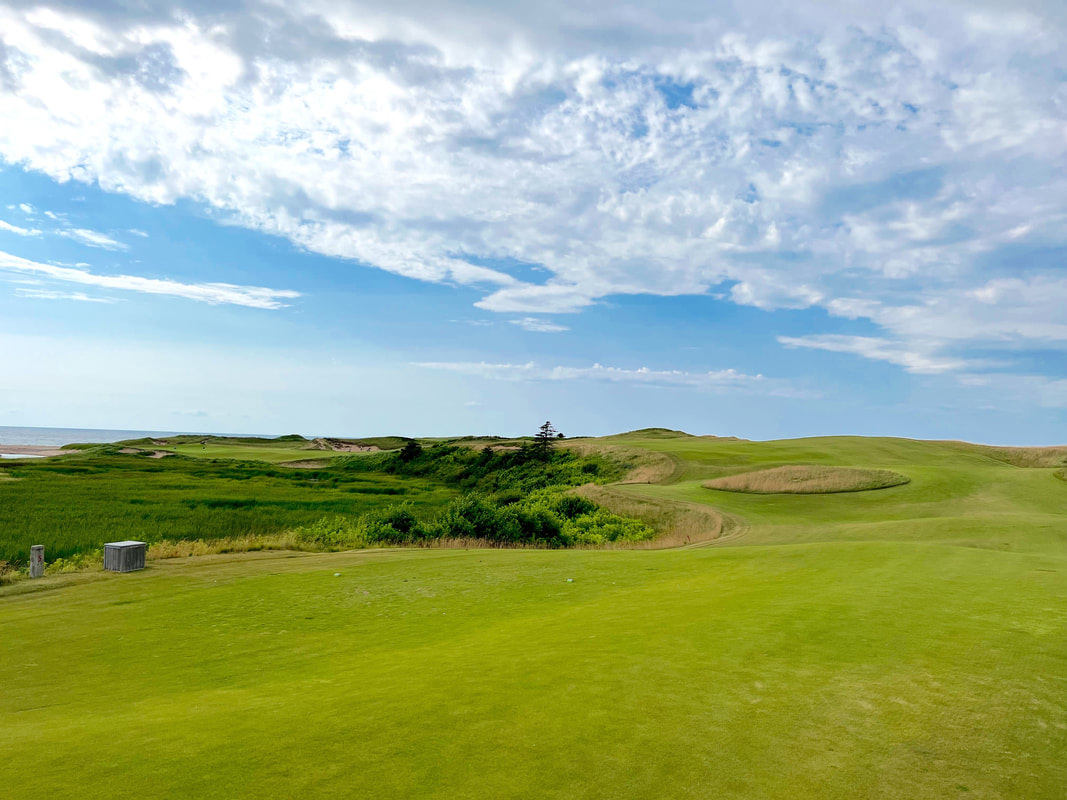
Many possibilities off the fifth tee. For most of us, it'll be a choice of aiming up the fairway on the right or carrying part of the cliff. This cape-style drive works great for everyone because unless you're a very short hitter, there's always a decision to be made about whether to carry more or less.
The fifth green also brings us into the sand dunes where we find the entire par 3 sixth. This is a fantastic short hole which looks more punishing than it is, but also ends up being a bit harder than you think it should be once you see what's going on. That’s because the green is large and there’s plenty of room to miss short (you might even be able to putt from the front tees), but it also slopes away and it’s difficult to get it close, unless the pin is in the bowl at the back-right.
We play back away from the ocean into the endless Canadian wilderness on the par 5 seventh. But this is another very good driving hole, where you can get in range with a bold carry up the right side…or run out of space and into the junk up the left. There’s not a lot to say about the rest of the hole but make sure that you carry your approach far enough.
The next two holes, another par 5 and a par 3 are a bit of a weak point. Eight is a solid driving hole where you can get close to the green in two if you pick a bold line off the tee but again, the rest of the shots aren’t that interesting. Then we have an awkward walk of about 150 yards up around the first green and the second tee to a downhill par 3 that plays all of 120 yards. It’s a pet peeve of mine to have a walk from a green to a tee that’s longer than that next hole and this one, while similar in concept, is inferior to the fourteenth hole next door. But at least it’s just as beautiful.
The next hole, a long par 5 with the ocean all the way down the left, was one of my favorites despite two incredibly disappointing attempts at playing it. First of all, I just love the look of the short grass along the edge of the cliff. But for most of the landing area, there are bunkers ‘protecting’ you from running over the cliff. More of an issue for me was a cluster of bunkers about 280 down the right side. This hole is downwind with the prevailing wind and it’s a challenge to fit one between the cliff right and the bunker cluster left.
It’s quite possible to go for the green if you hit a good one because it can roll out forever—one of my playing partners’ drives went about 400 yards. But if you’re laying up, you must be careful to stay well short of the inlet about 60 yards short of the green. It’s all downhill and downwind, so you need to lay back further than you think.
The par 4 eleventh takes us back uphill and inland, past the new vacation homes of Sydney Crosby and other Canadian elites. It’s pretty easy to tell what you should do here—hug the bunker right because the hilltop green opens up on that side. It’s best to err short here because you want no part of what’s over the green.
While the 200+ yard (up to 245) looks straight-forward enough, I found it baffling to play. You can’t really run one onto the green here because the land slopes away to the left. And there was almost no way to land one on the green and hold it there given the wind direction (down) and the firm ground. I’d be interested to try to play some shots around the right side of the bunker, but in addition to there not being much room to do this, it didn’t look like there was enough tilt toward the green. But then again, I suppose short and left isn’t too bad.
Thirteen is a bit of a breather hole with plenty of width and a much more receptive green, if you carry the rise in front of it.
Fourteen is a simple-looking ~160 yard par 3…but it didn’t play simple. The issue here again was that the green was so firm that it was difficult to carry on and hold it there.
The four hole run home immediately became famous when the course opened and for good reason. The par 5 fifteenth is a thrill. The main feature is a bunker in the middle of the fairway, which requires about a 260 carry from the tips. I suppose that you’re offered a good view of the green if you keep your drive in the area left of it…but none of us was bold enough to try to hit it there.
Carry it or miss it a bit right and your ball will run well down the fairway (at least with the standard down wind), possibly to a career long drive. From here you’ll have a blind shot that asks only one question: can you carry a centerline bunker 50 yards short of the center of the green? If yes, pick a club that can just carry that and go for it. If not, lay well back. You probably can’t hold the green with your second, but the bunkers behind the green aren’t too bad.
Carry it or miss it a bit right and your ball will run well down the fairway (at least with the standard down wind), possibly to a career long drive. From here you’ll have a blind shot that asks only one question: can you carry a centerline bunker 50 yards short of the center of the green? If yes, pick a club that can just carry that and go for it. If not, lay well back. You probably can’t hold the green with your second, but the bunkers behind the green aren’t too bad.
The par 3 sixteenth is just extraordinary. If you’re trying to keep a score together—which I was in my second round—it’s one of the most terrifying shots that you’ll ever see. But it was, to this point, the single most spectacular.
There’s some room to bail out short and left, but it’ll be very difficult to keep your pitch on the upper left side of the green from here. If the flag is on the precipice at the right side of the green, your score would probably be better off if you played over here and pitched on, although I could understand why no one would ever do that. You didn’t come all this way and pay all this money not to try that shot.
The only shot that I’ve ever seen that might outdo the tee shot on sixteen is the tee shot from the tips on seventeen. I can hardly imagine a more difficult-looking shot, uphill and over a massive cliff, with no view of the landing area. I moved up a set of tees from where I could at least see a little of the fairway.
If you’re a long hitter, the best way to play the hole is to bomb one along the cliff. While into the wind, it’s only between a 200 and 240 yard carry depending on the line and if you carry even part of the cliff, your ball will likely bound forward near the green. For those of us who don’t hit a long ball and are too scared to try this shot, there’s plenty of room out to the left (and, helpfully, a spotter).
If you’re a long hitter, the best way to play the hole is to bomb one along the cliff. While into the wind, it’s only between a 200 and 240 yard carry depending on the line and if you carry even part of the cliff, your ball will likely bound forward near the green. For those of us who don’t hit a long ball and are too scared to try this shot, there’s plenty of room out to the left (and, helpfully, a spotter).
But unless the pin is in the back of the green, the approach off a layup is very tough, unless you can put a lot of spin on the ball, your wedge approach will roll out to the back of the green. Alternatively, you can get clever and play a bump-and-run around the bunker on the left—the land here is contoured to feed the ball onto the green. If you pull it off just right, I think you can keep it on the front of the green. But it’d take some experimentation to make that work. Just hit one up on the green, make your 4, and go to the next tee.
It’s a puzzling hole if you layup but I think that’s because it’s meant to heavily favor those who go for the green and pull it off. Given the shot required to do that, I have no problem with it. This is one of the greatest short par 4s that I've seen.
It’s a puzzling hole if you layup but I think that’s because it’s meant to heavily favor those who go for the green and pull it off. Given the shot required to do that, I have no problem with it. This is one of the greatest short par 4s that I've seen.
The par 5 eighteenth is a bit of a mirror image of the tenth, but of course plays much longer because it’s into the wind. Like ten, you need to fit one between bunkers and ocean—a fade off the left bunkers would work great.
The approach is similar too except this time, you need to be able to carry within about 90 yards of the center of the green to carry the cove. Otherwise you might want to play out to the left because you’ll be a long way back if you lay up short. It’s always best to err a bit short here because the green narrows its back.
I mentioned in my review of Cabot Links that the starter there told me that people’s preferences split about 50/50 between Cabot Links and Cabot Cliffs. That was before I had played Cabot Cliffs and I was surprised because Cabot Cliffs looked much more spectacular. And it is. But after playing it, I think I can understand why many prefer Cabot Links. Unless the wind is down, this is a much harder course than Cabot Links. There are more opportunities for lost balls and the green complexes are more difficult.
It was also windier here both days than at Cabot Links. Now we played both morning rounds there and both afternoon rounds here and I can’t rule out that it just got more windy in the afternoon. But much of Cabot Cliffs is more than 75 feet above sea level while Cabot Links is just 15-30 feet above and I suspect that it’s usually more windy here. Cabot Cliffs is plenty wide enough to handle the wind but the combination of the wind and the steeper slopes throughout the course make it much more difficult to control the ball here. Still, the course record is much lower here than at Cabot Links (60 here vs. I think 65 or 66 for Cabot Links) so the course isn’t always more difficult.
As far as judging the courses, it would come down to how you weigh the importance of the spectacular vs. the subtle. This property afforded Coore and Crenshaw some spectacular opportunities and there’s no doubt that they took advantage of them. Cabot Links simply has nothing to compare to the sixteenth or seventeenth holes. I'm not sure that any architects could have done a better job with the extraordinary moments on the property than Coore and Crenshaw did.
But there’s not a lot like the little humps and bumps that you find around the greens at Cabot Links. I loved the shaping on and especially around the greens at Cabot Links and am always especially impressed when architects are able to create something really interesting on modest land. So I think I give the nod to Cabot Links. But I'm also not sure that you could have done that here--this property is quite hilly while Cabot Links is mostly gently rolling or flat. There were always going to have to be some pretty big slopes around these greens. I suppose the challenge here was the opposite; yes you can build a lot of spectacular-looking holes, but can you keep them from being too severe?
I think that Coore and Crenshaw succeeded in building a course that isn't too severe and you have to give them a lot of credit for that. I can think of a few highly regarded living architects who may have let things get a bit out of control on this property. The merit of something is not determined just by what it does and does well, but what it doesn’t do and could have done badly. Being a perfect 10 for beauty doesn't hurt either.
It was also windier here both days than at Cabot Links. Now we played both morning rounds there and both afternoon rounds here and I can’t rule out that it just got more windy in the afternoon. But much of Cabot Cliffs is more than 75 feet above sea level while Cabot Links is just 15-30 feet above and I suspect that it’s usually more windy here. Cabot Cliffs is plenty wide enough to handle the wind but the combination of the wind and the steeper slopes throughout the course make it much more difficult to control the ball here. Still, the course record is much lower here than at Cabot Links (60 here vs. I think 65 or 66 for Cabot Links) so the course isn’t always more difficult.
As far as judging the courses, it would come down to how you weigh the importance of the spectacular vs. the subtle. This property afforded Coore and Crenshaw some spectacular opportunities and there’s no doubt that they took advantage of them. Cabot Links simply has nothing to compare to the sixteenth or seventeenth holes. I'm not sure that any architects could have done a better job with the extraordinary moments on the property than Coore and Crenshaw did.
But there’s not a lot like the little humps and bumps that you find around the greens at Cabot Links. I loved the shaping on and especially around the greens at Cabot Links and am always especially impressed when architects are able to create something really interesting on modest land. So I think I give the nod to Cabot Links. But I'm also not sure that you could have done that here--this property is quite hilly while Cabot Links is mostly gently rolling or flat. There were always going to have to be some pretty big slopes around these greens. I suppose the challenge here was the opposite; yes you can build a lot of spectacular-looking holes, but can you keep them from being too severe?
I think that Coore and Crenshaw succeeded in building a course that isn't too severe and you have to give them a lot of credit for that. I can think of a few highly regarded living architects who may have let things get a bit out of control on this property. The merit of something is not determined just by what it does and does well, but what it doesn’t do and could have done badly. Being a perfect 10 for beauty doesn't hurt either.
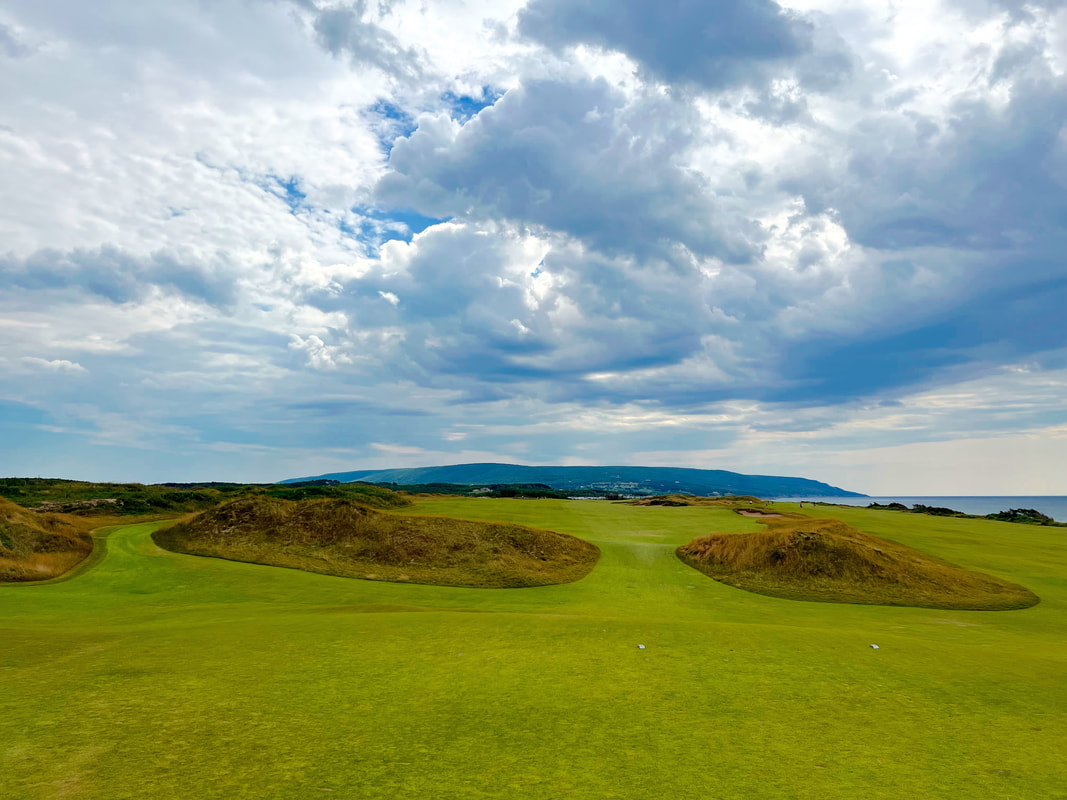
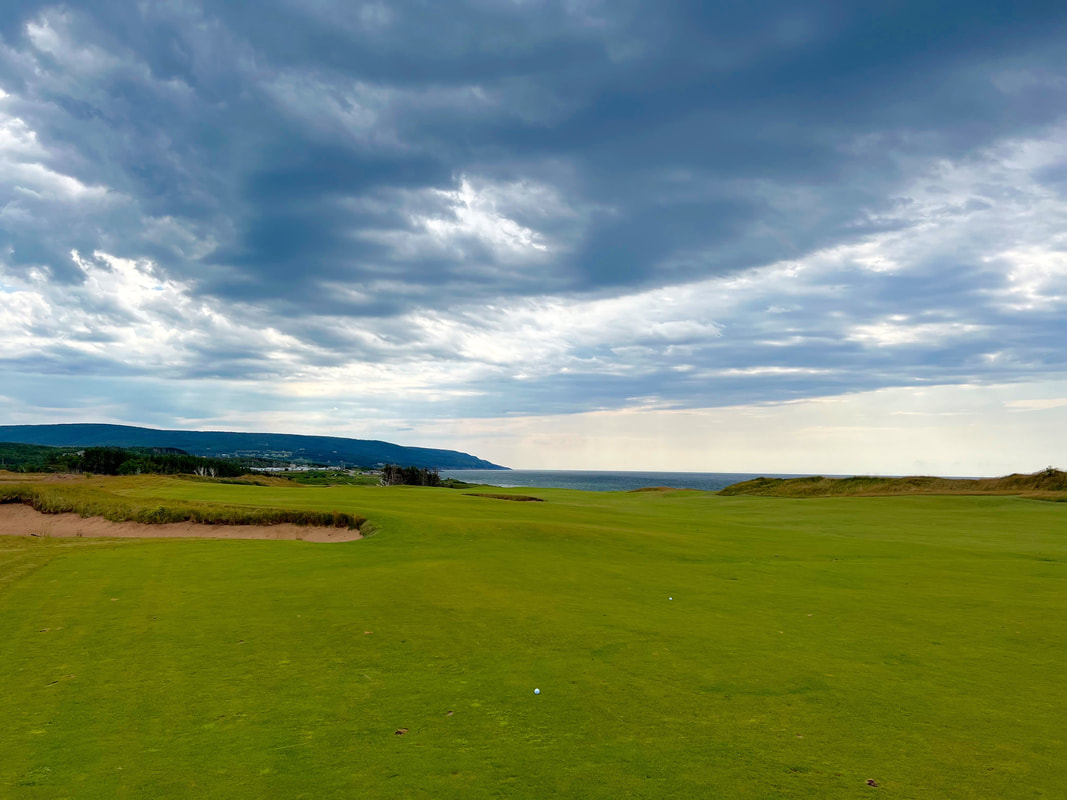
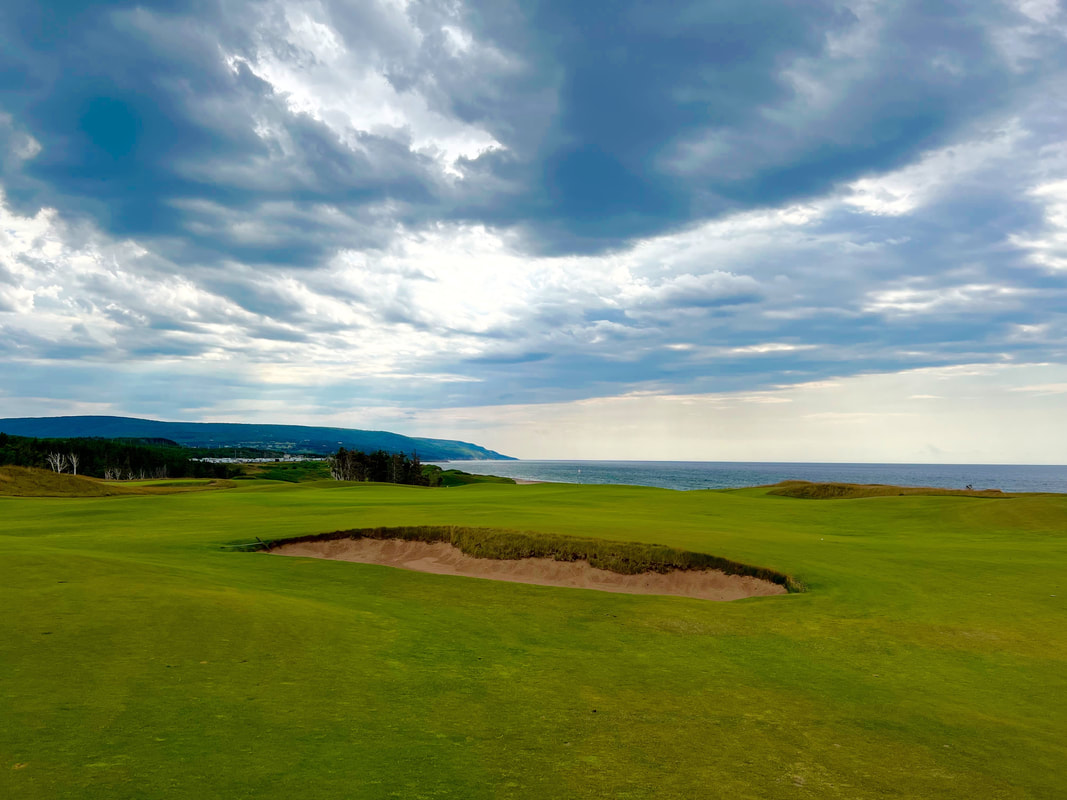
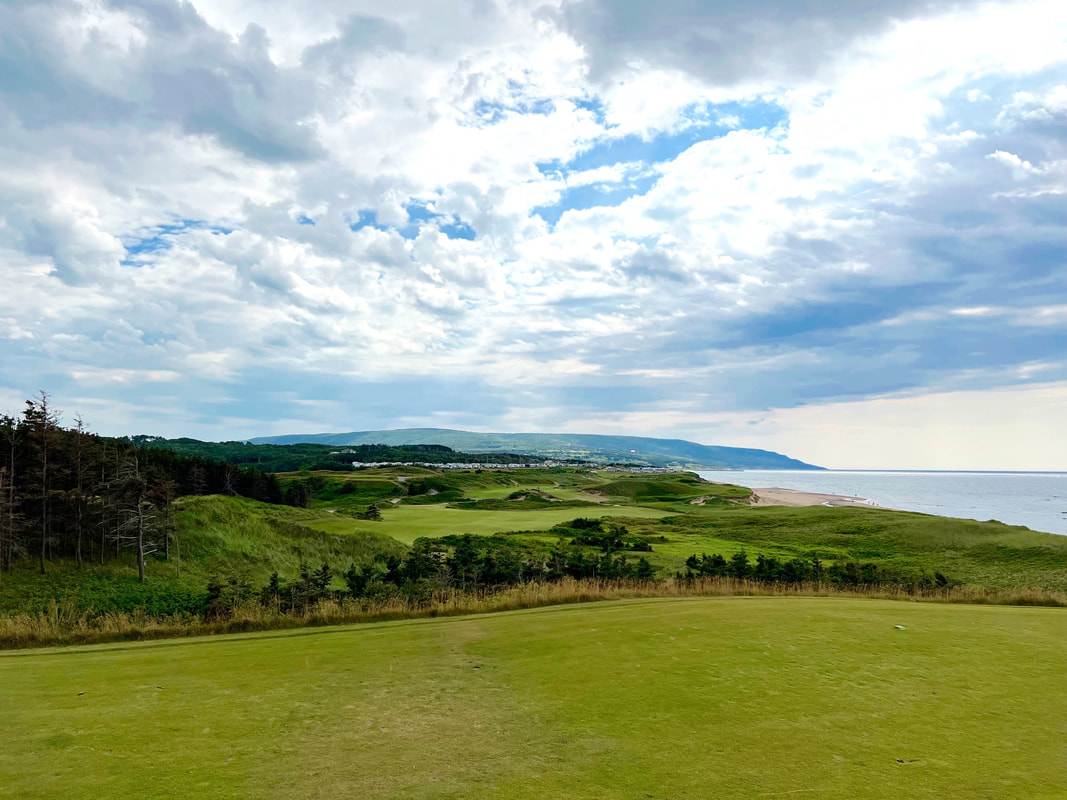
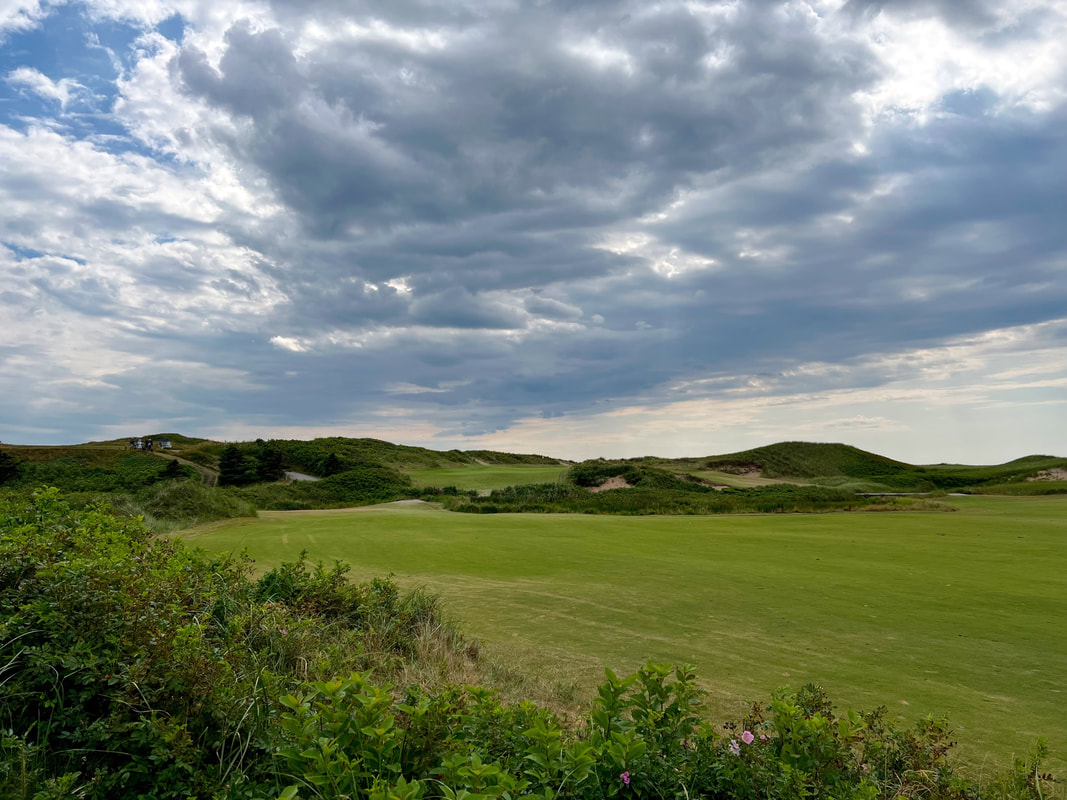
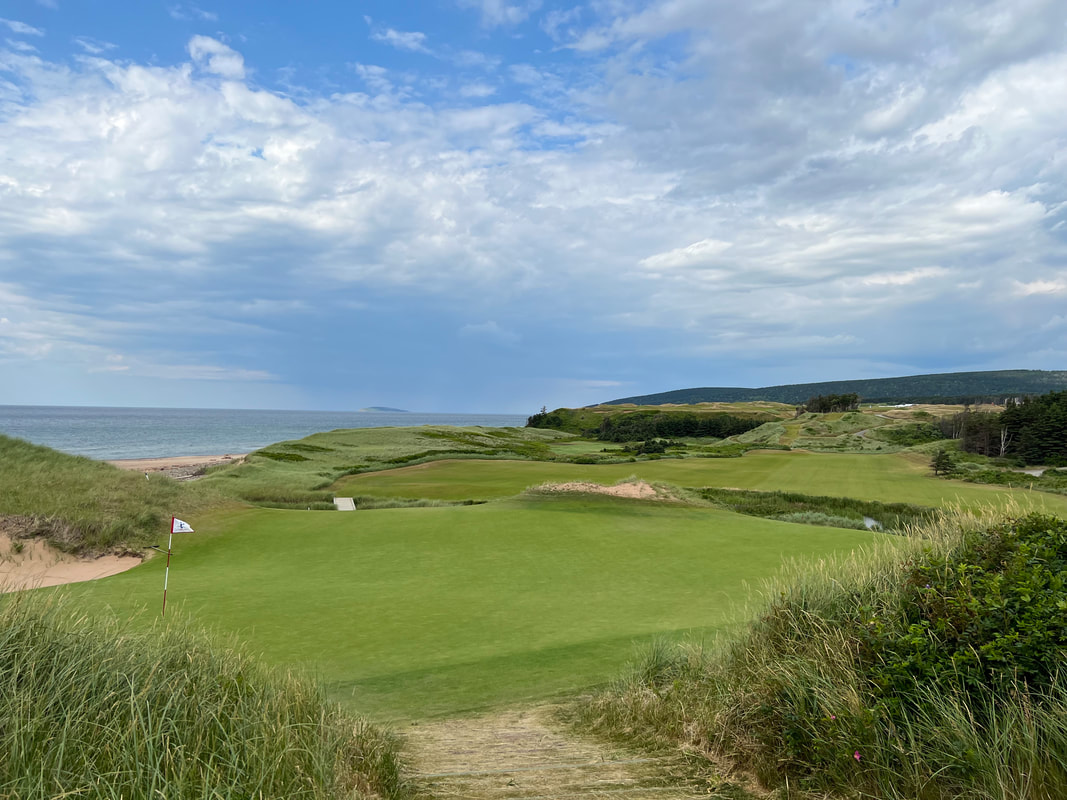

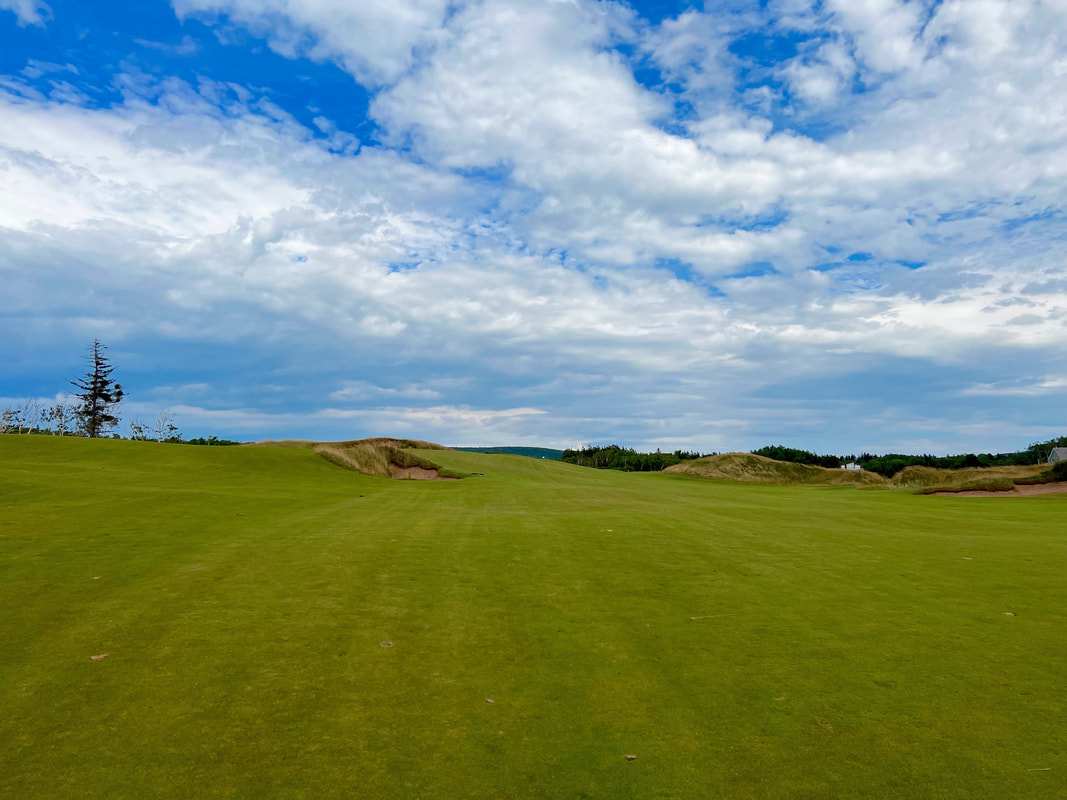
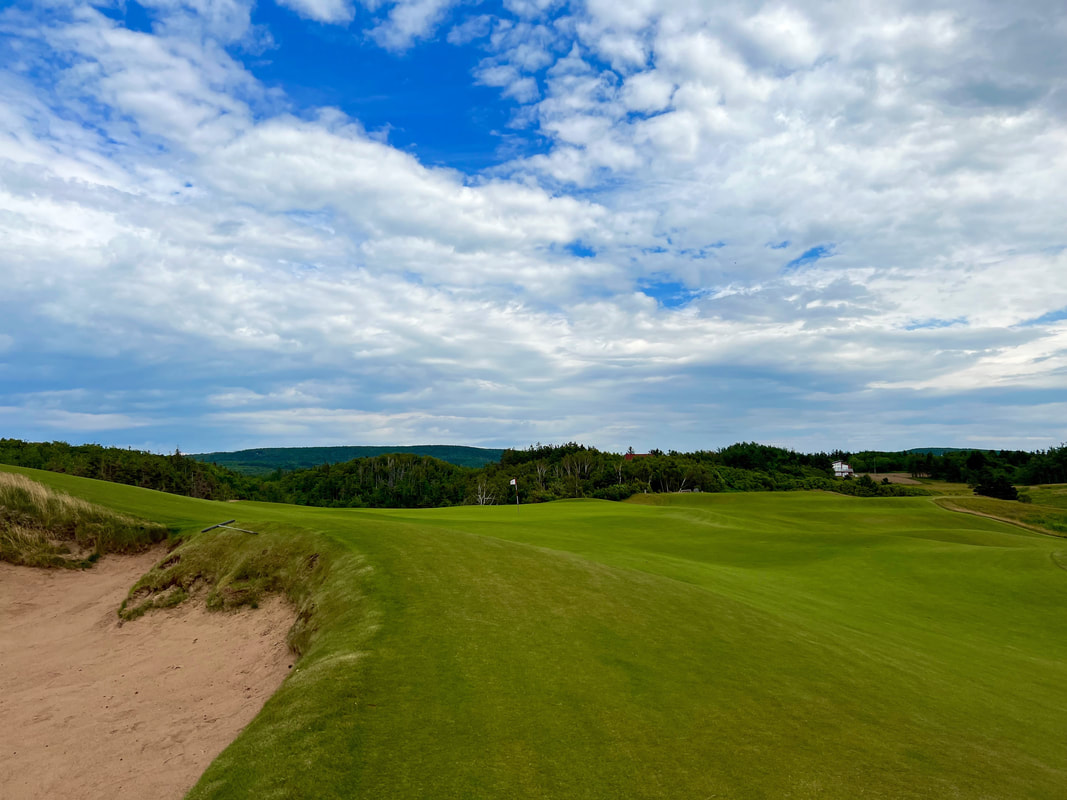
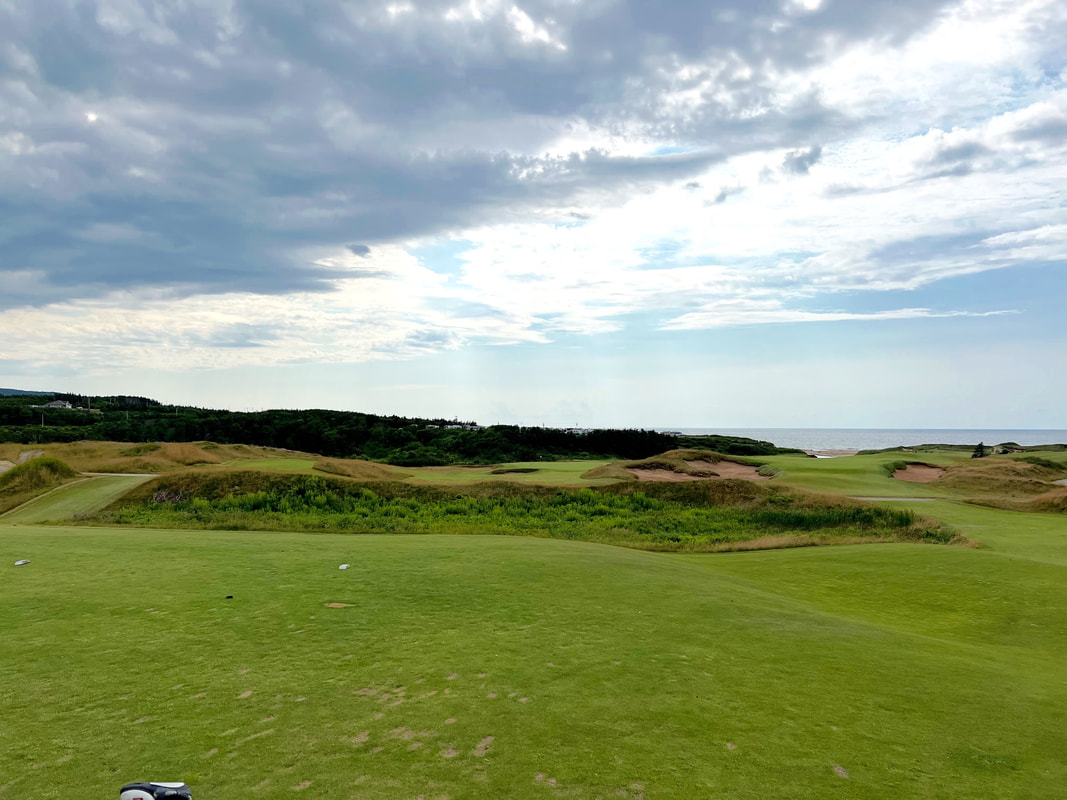
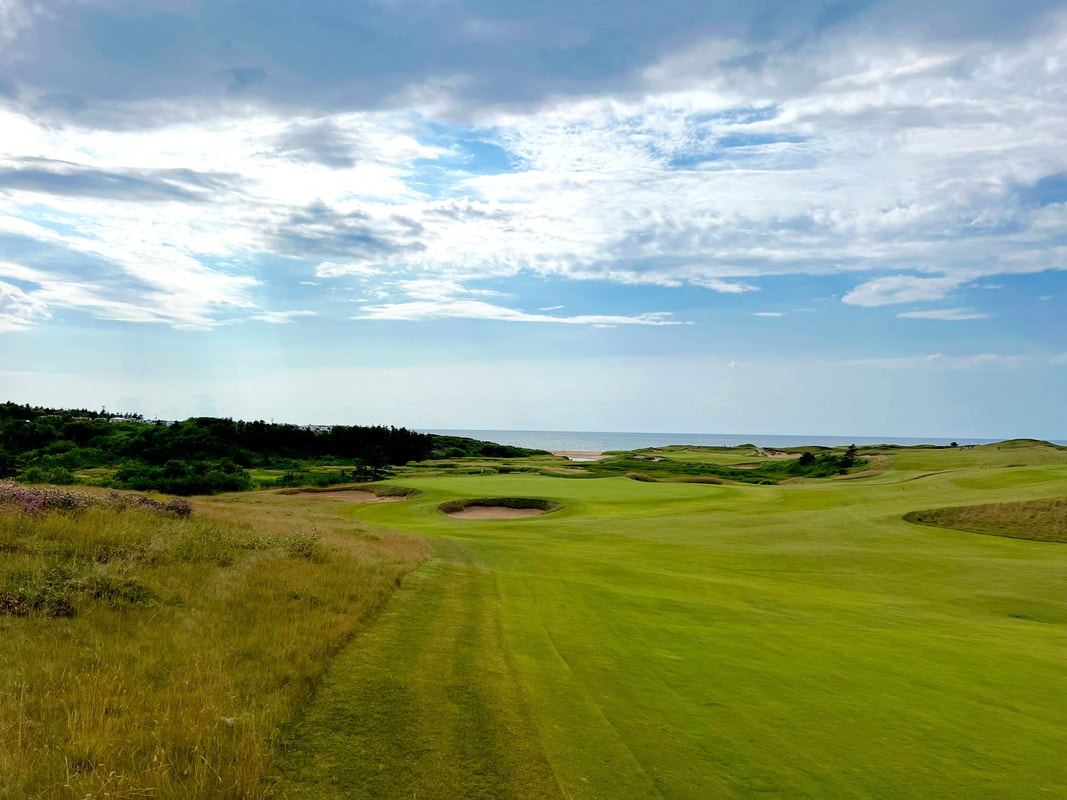
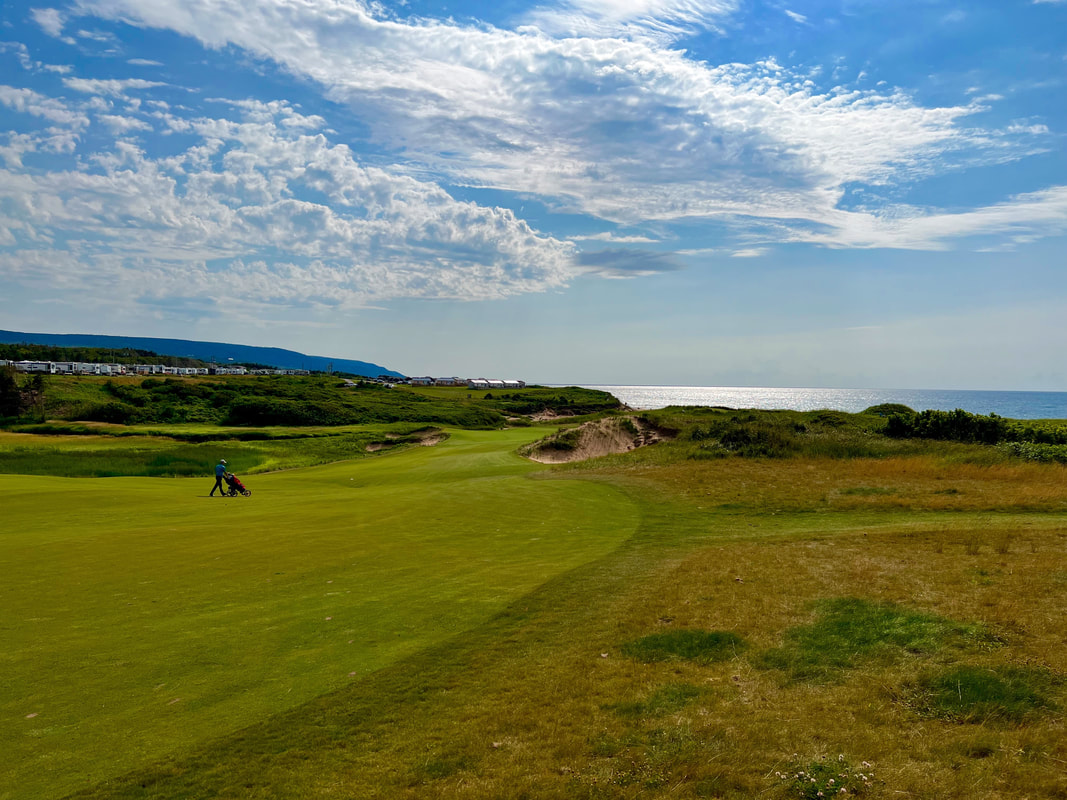
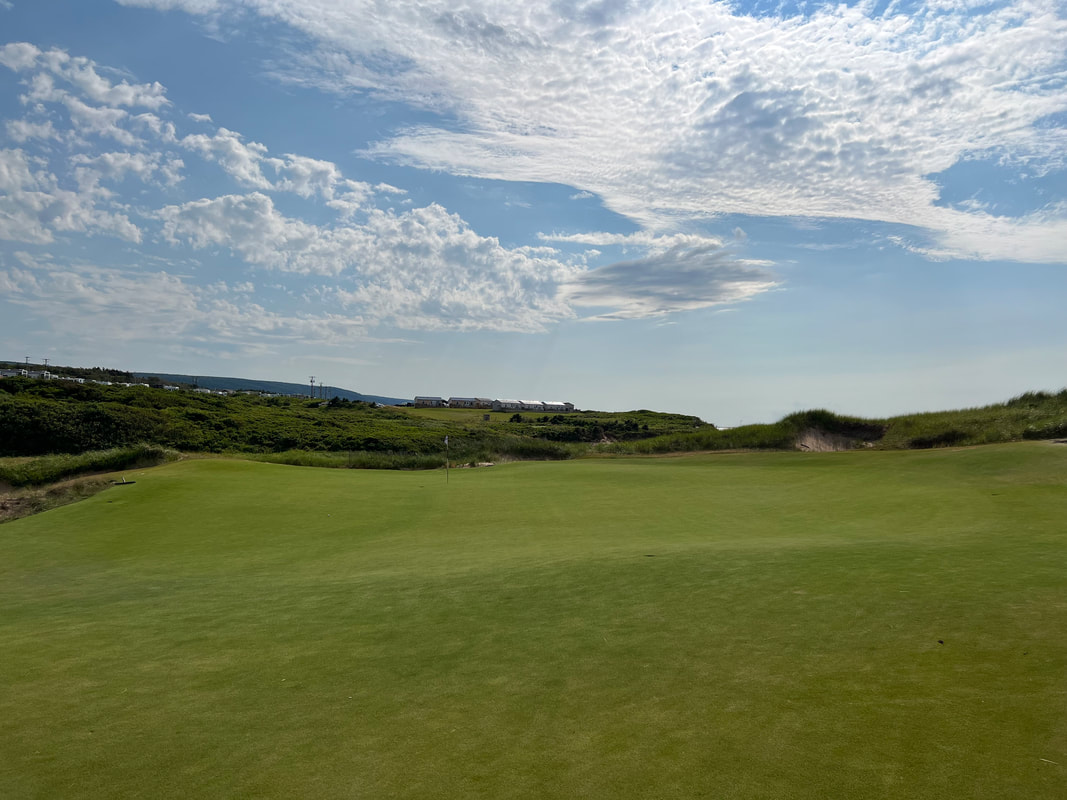
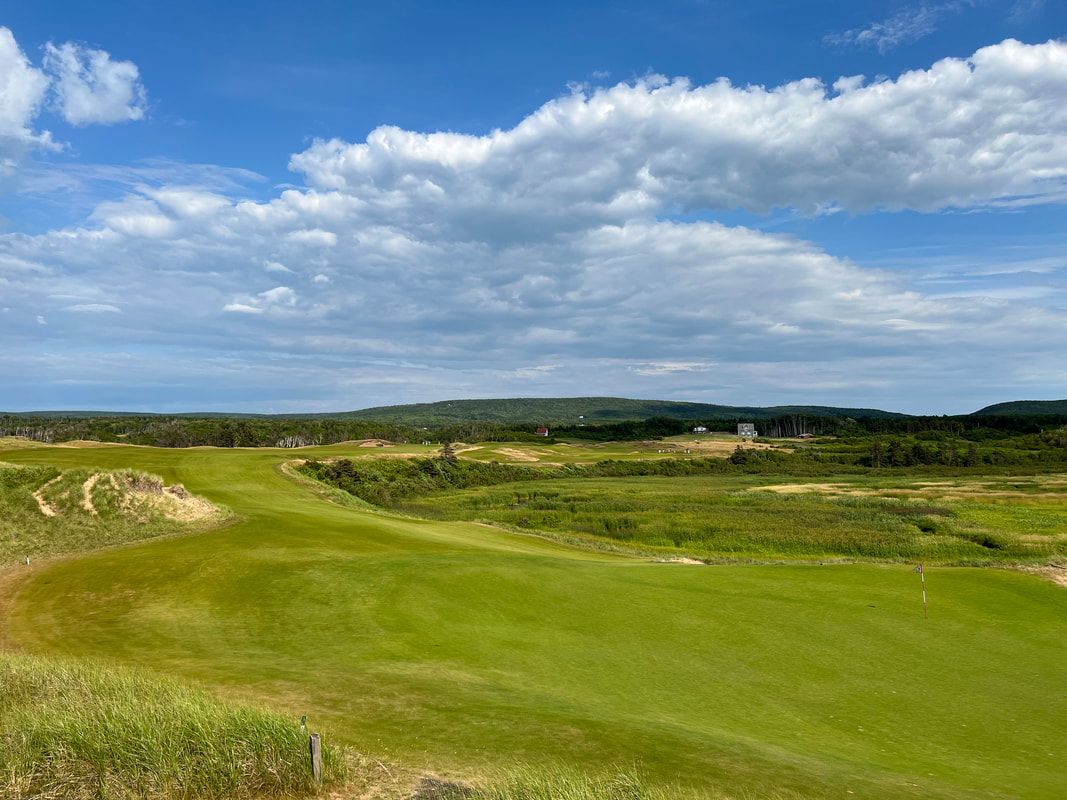
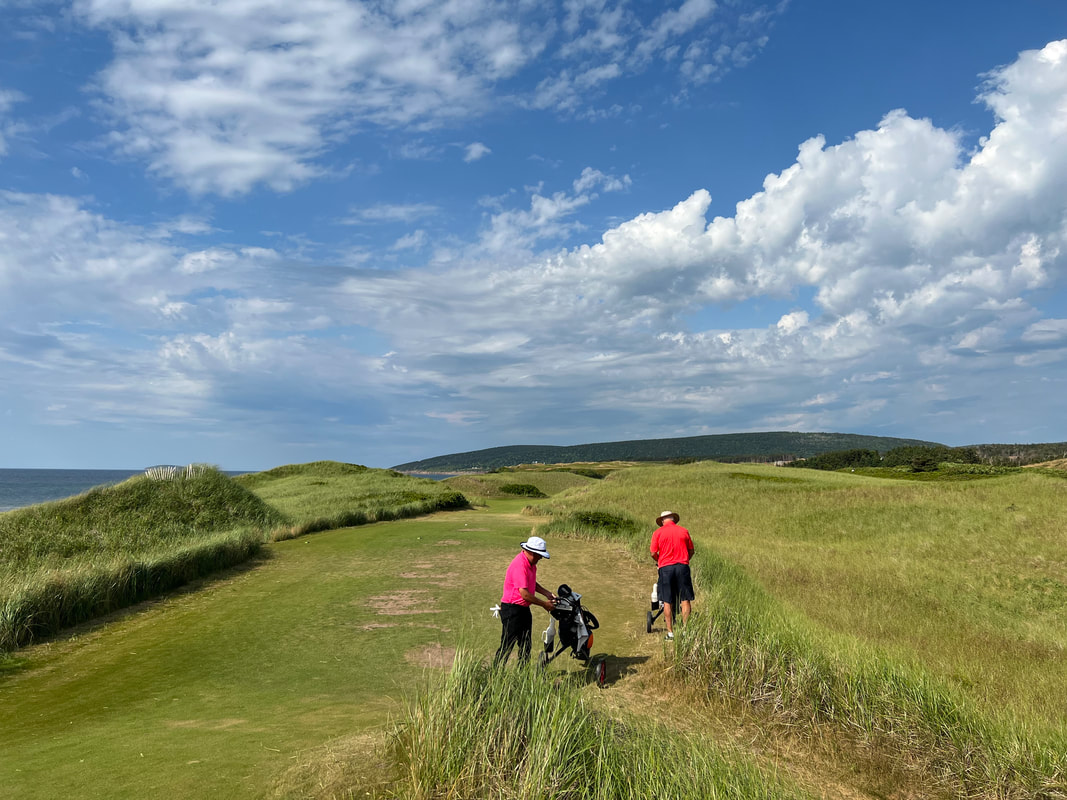
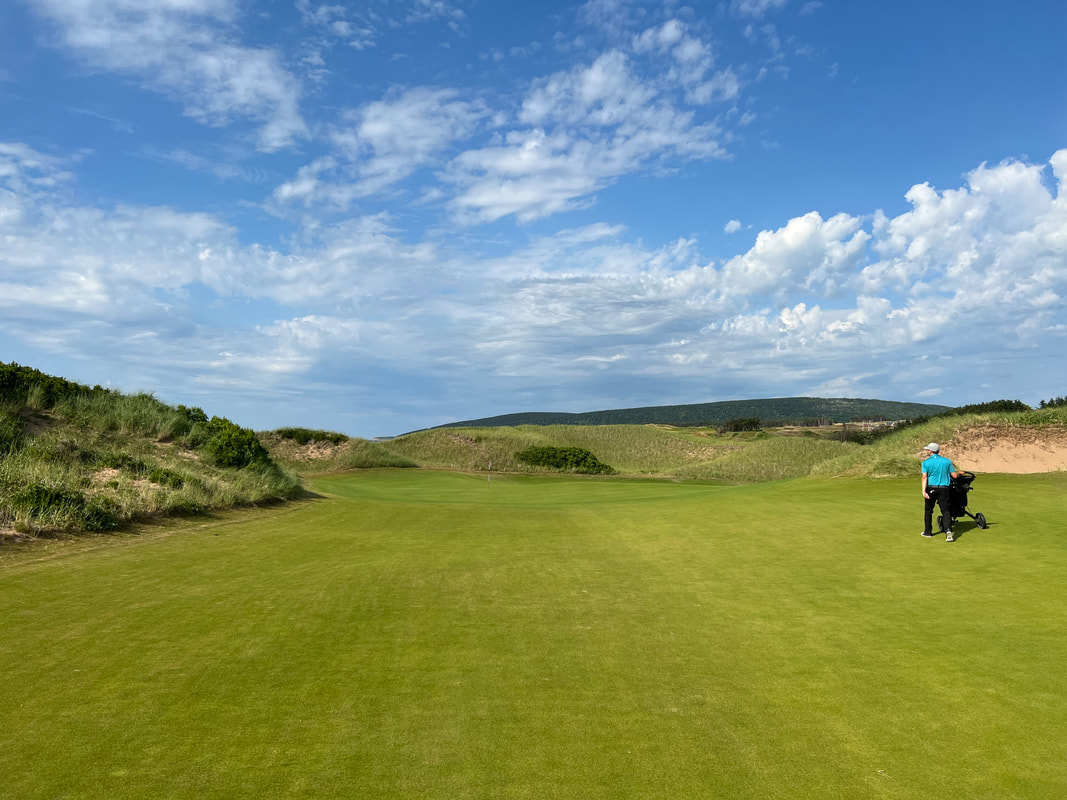
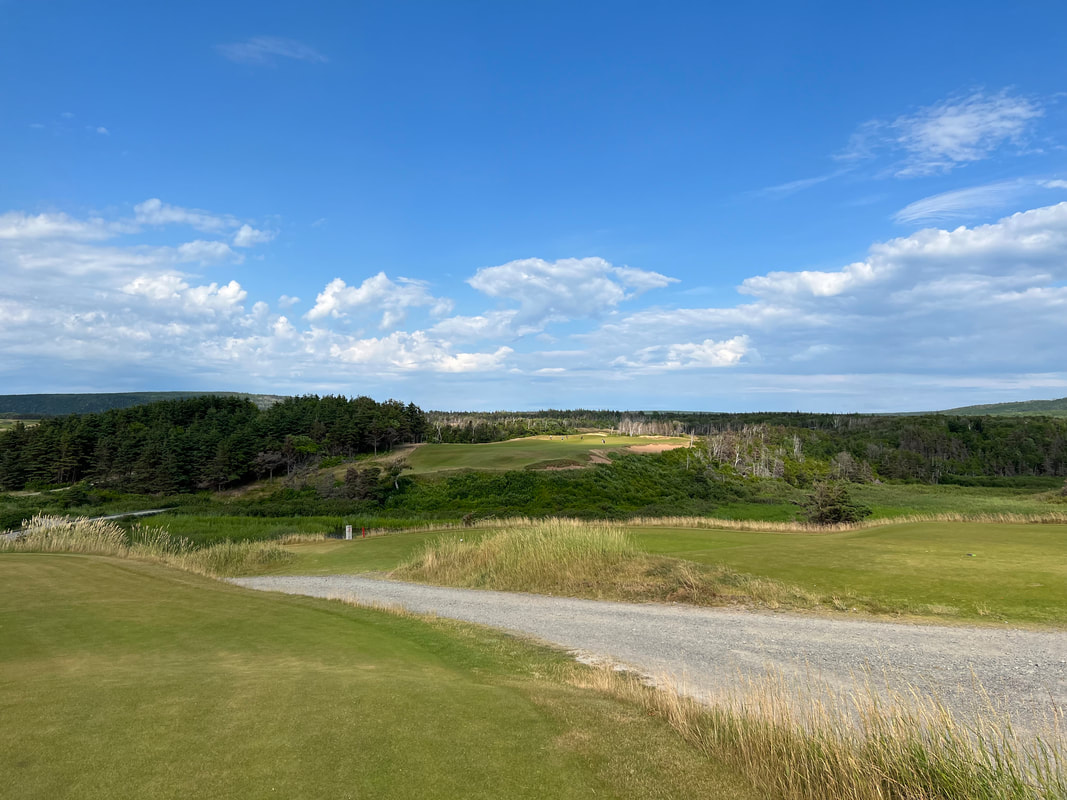
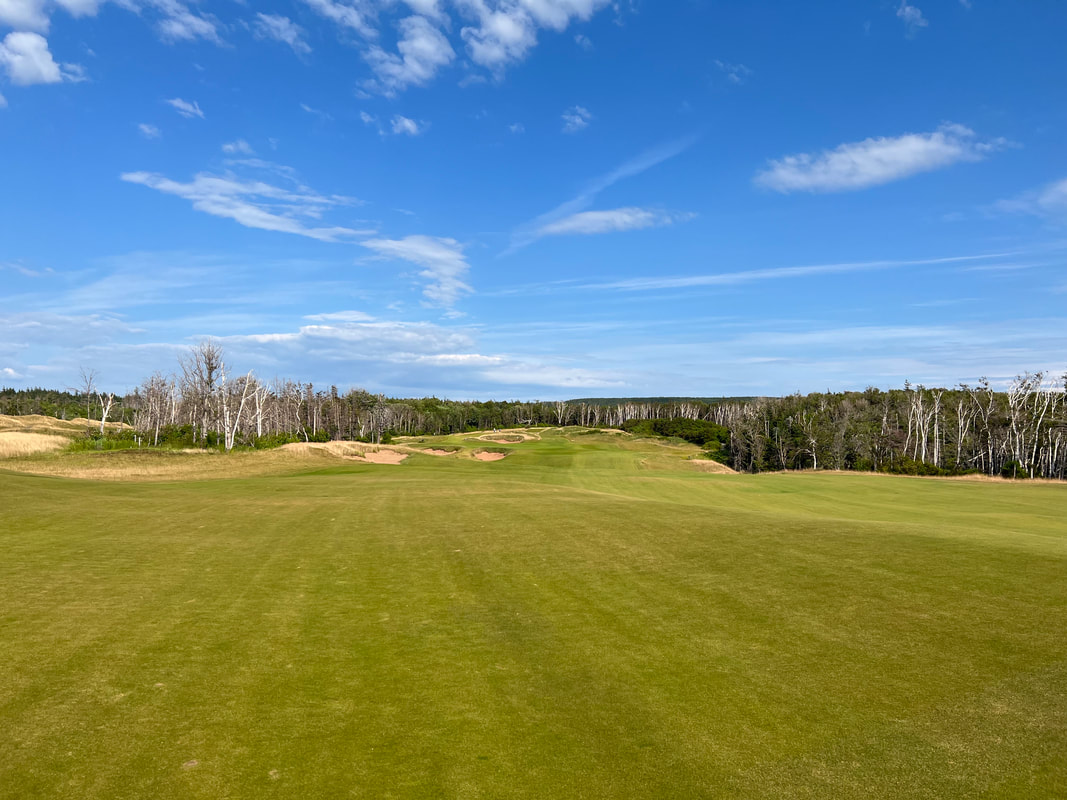
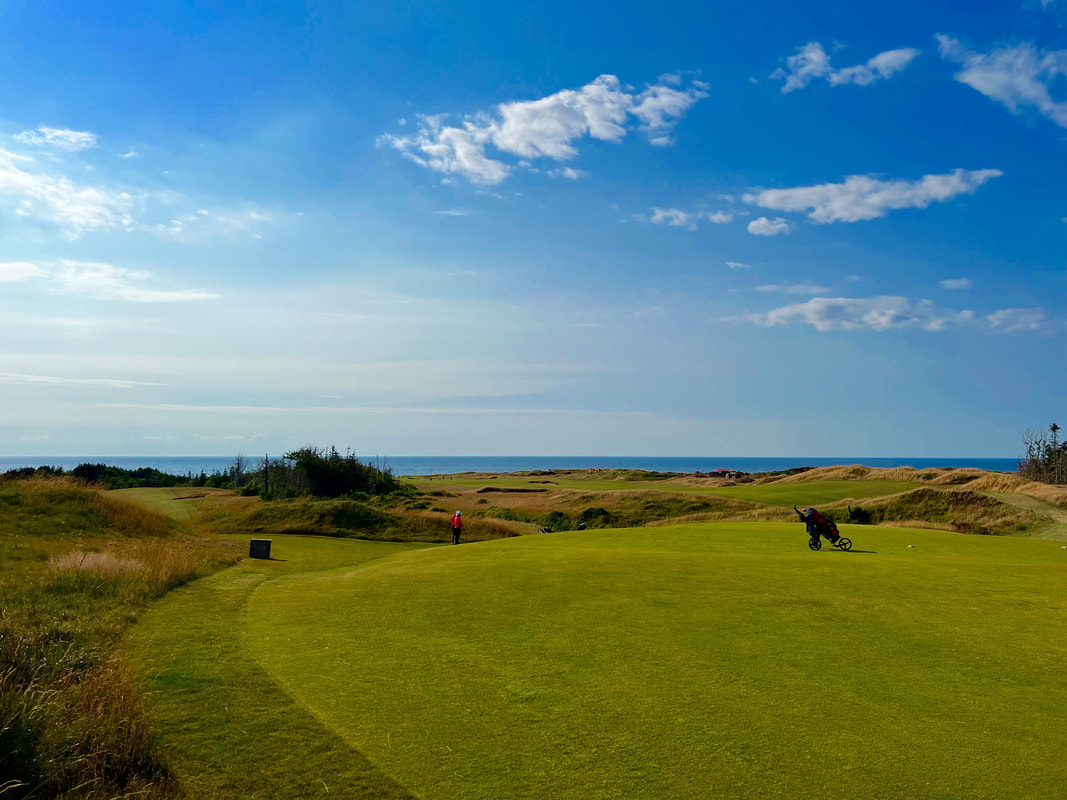
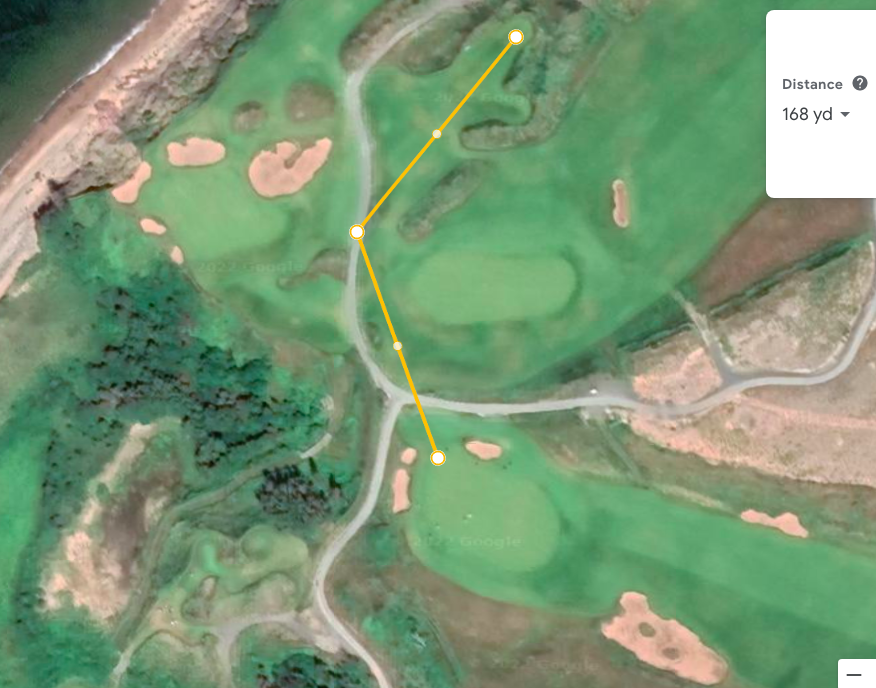
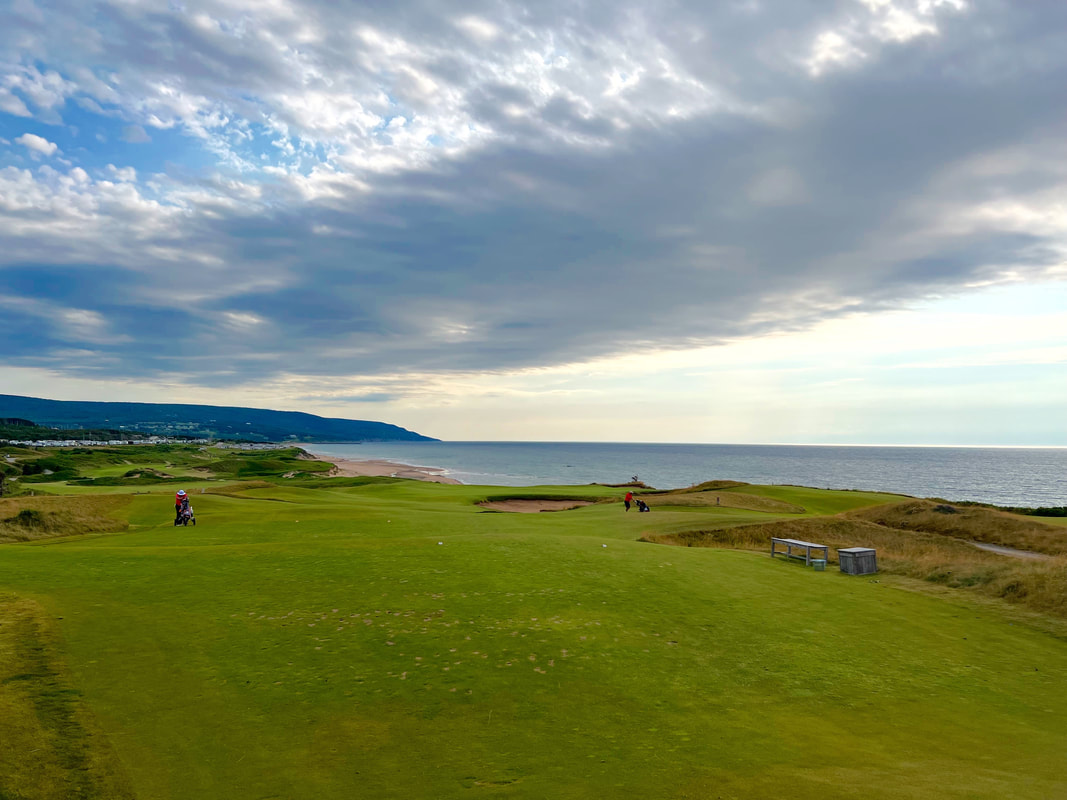
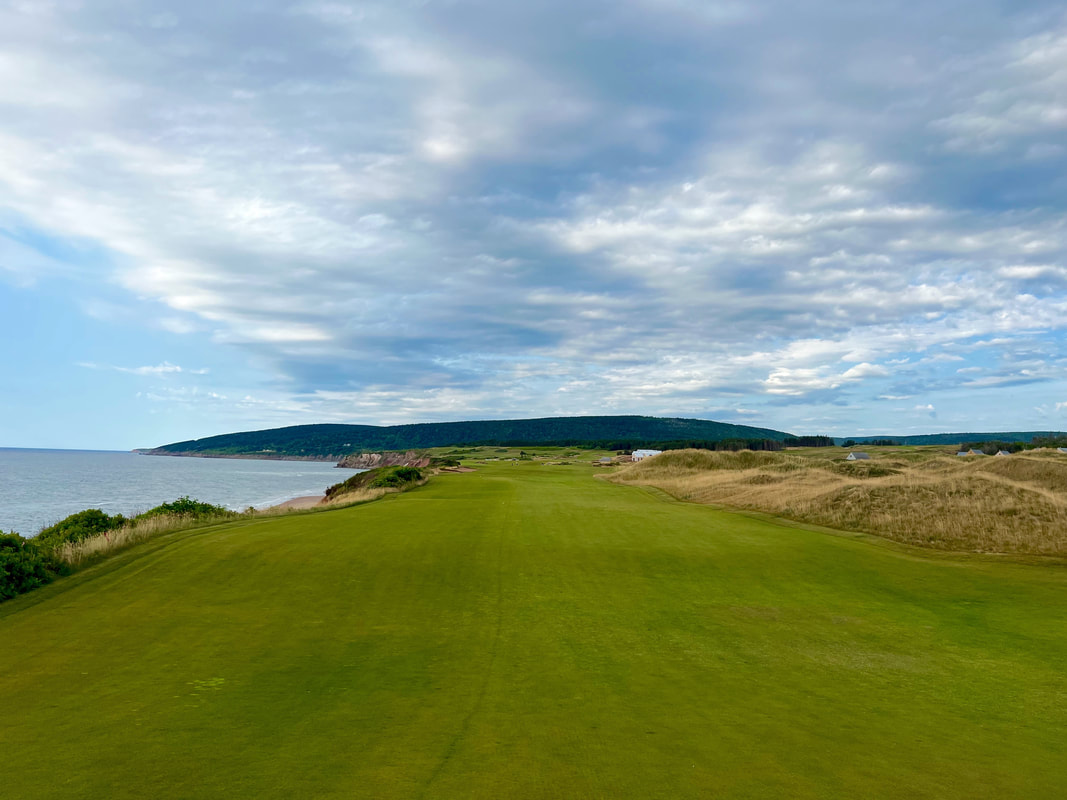
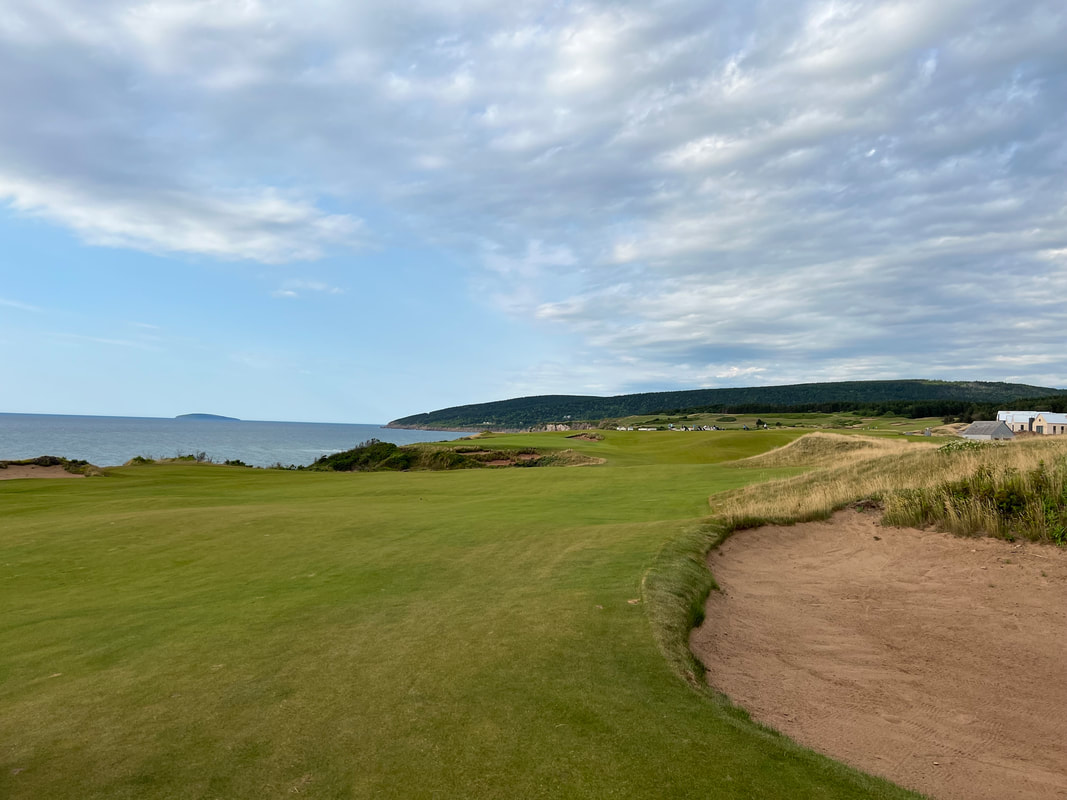
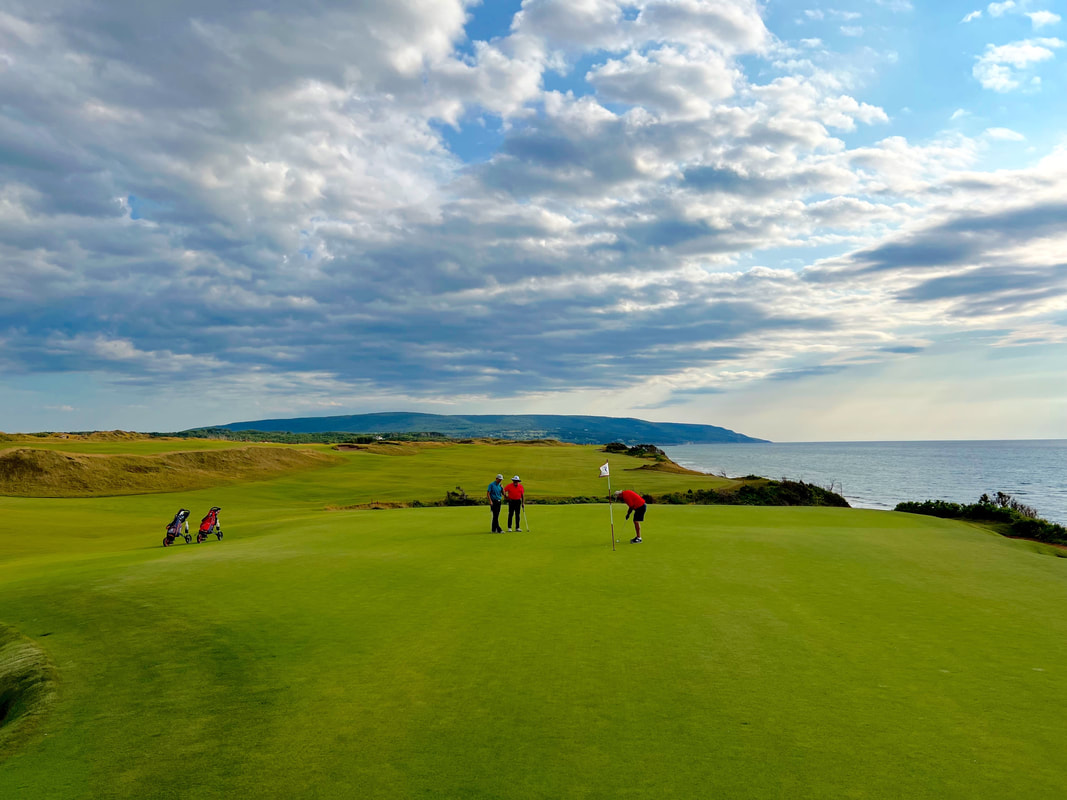
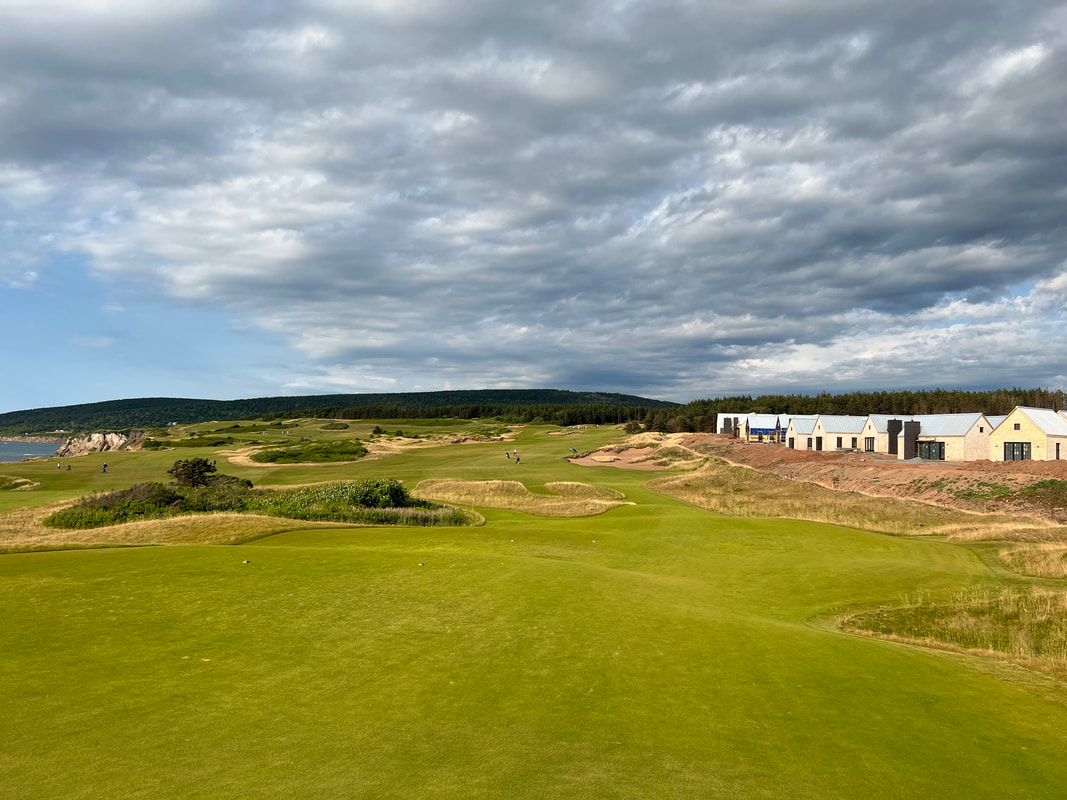
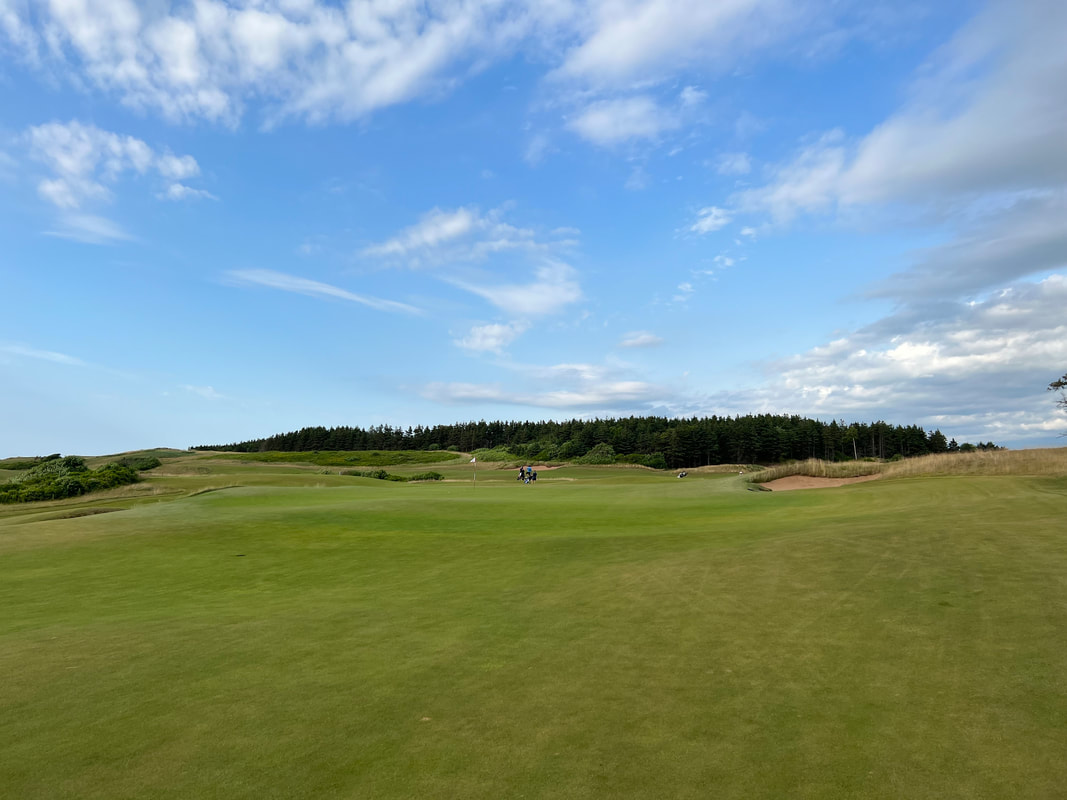
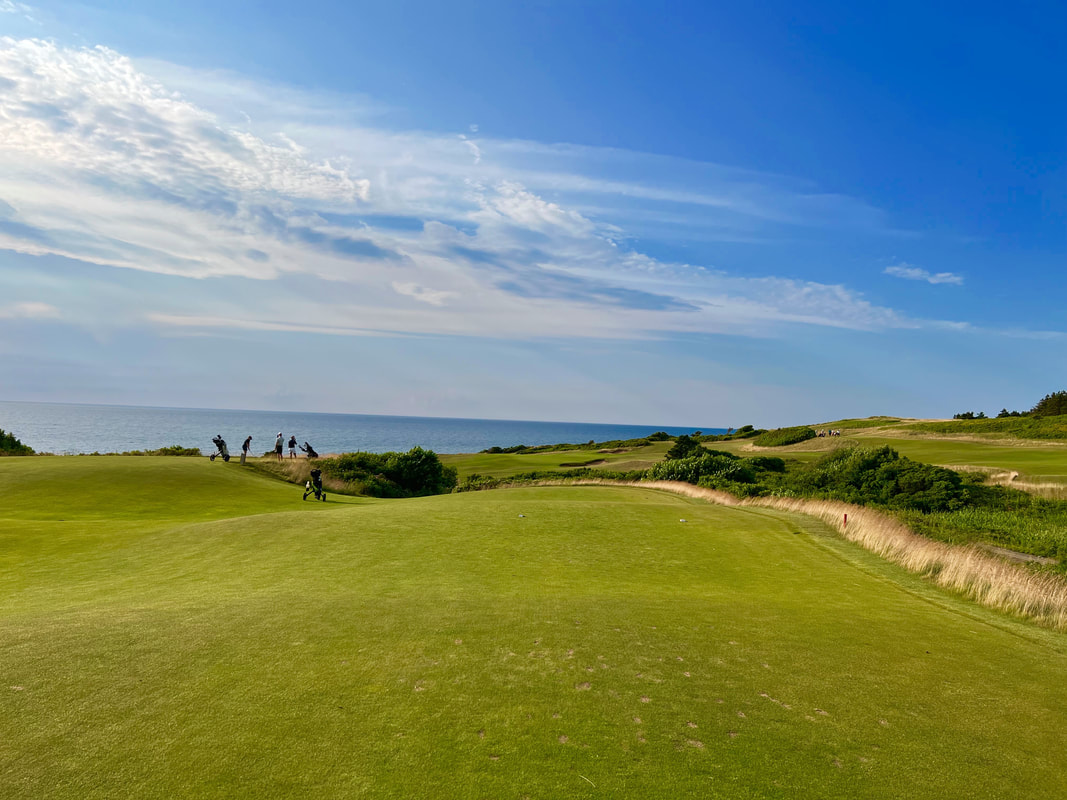

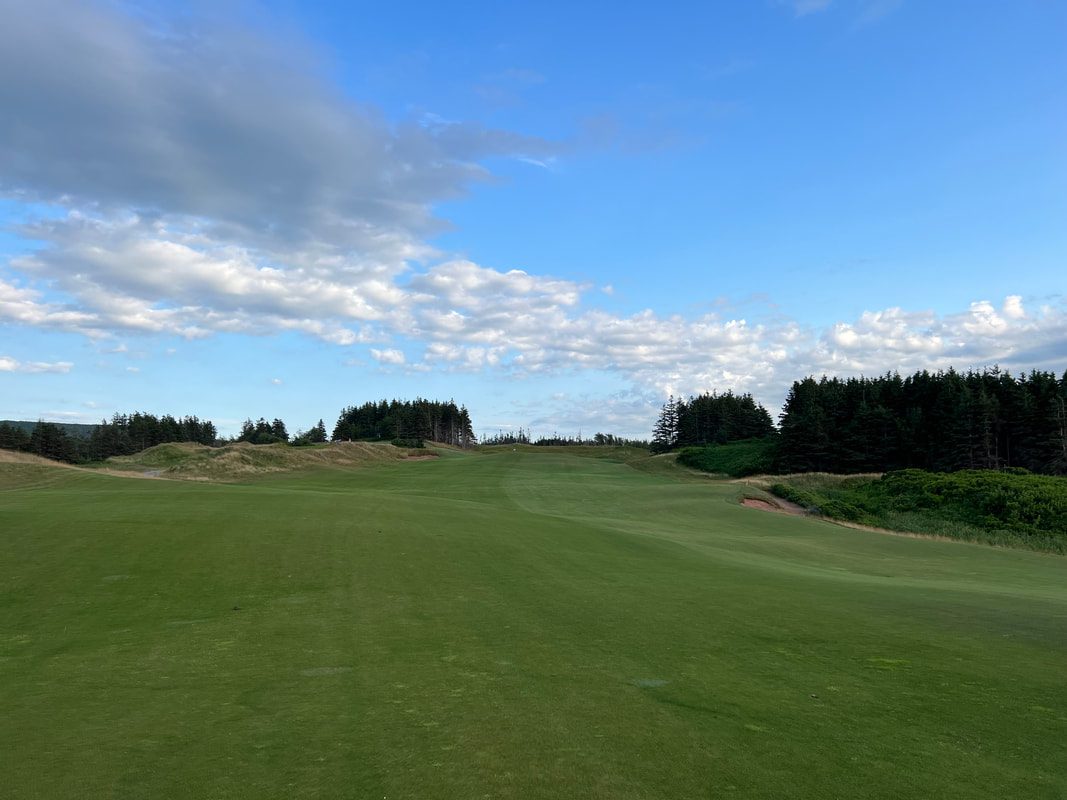
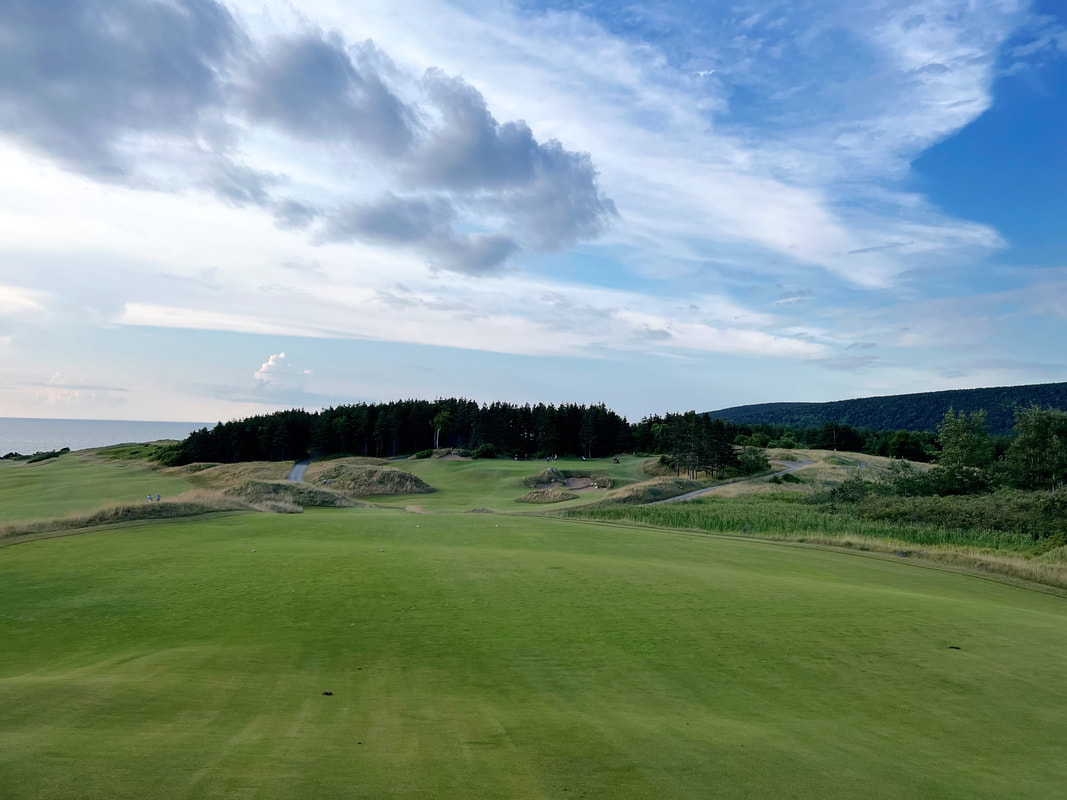
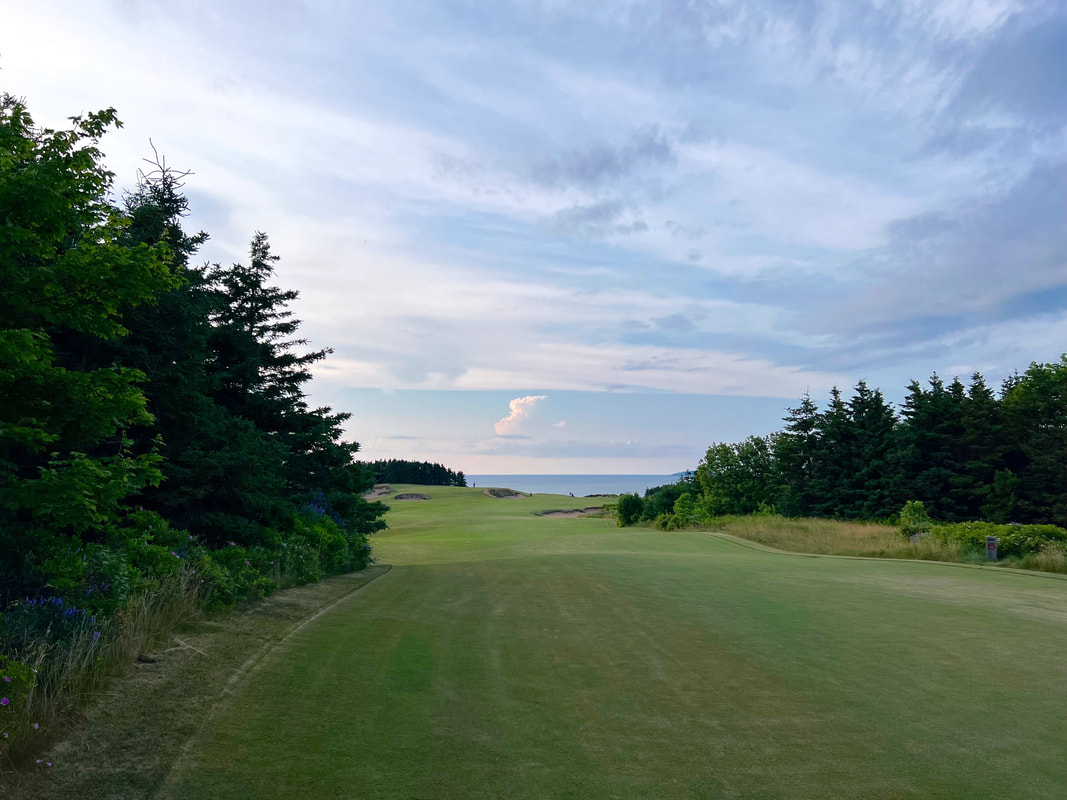
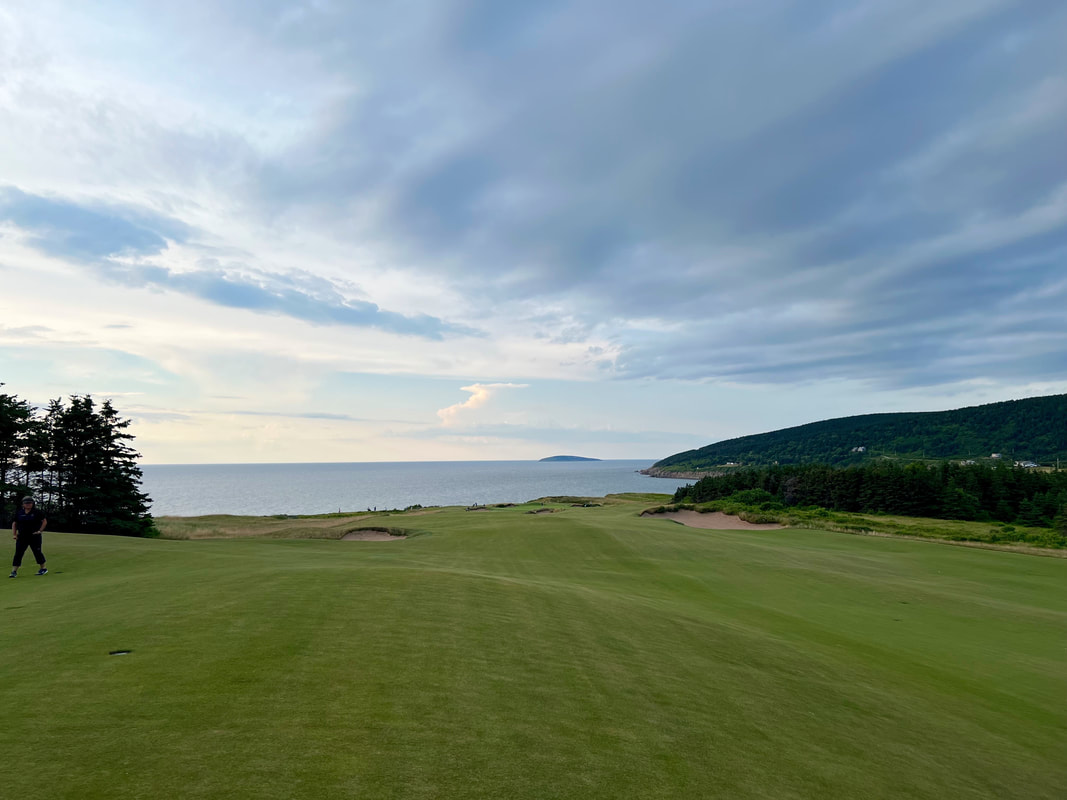
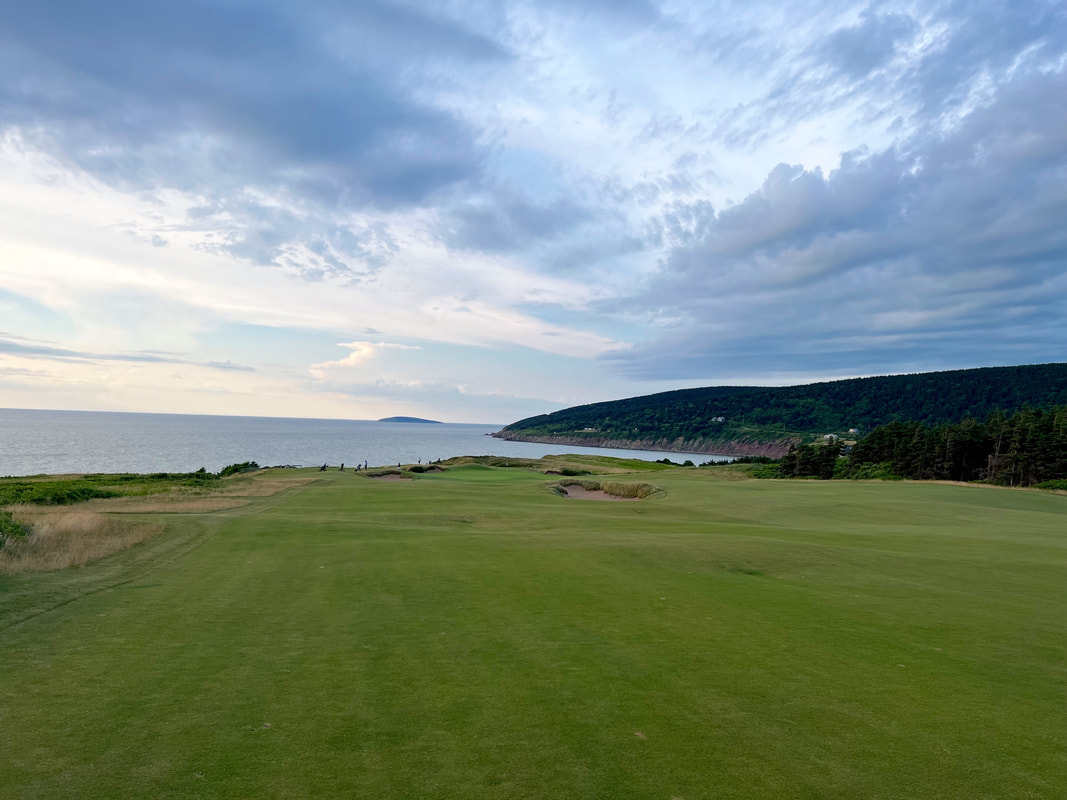
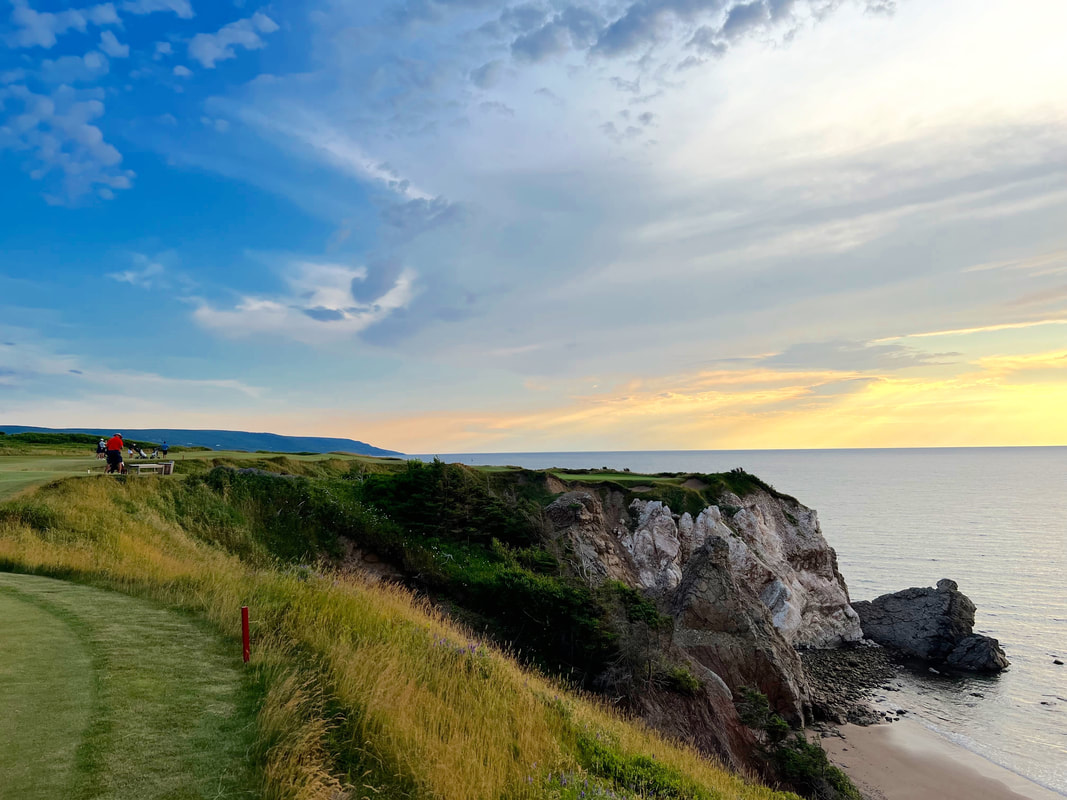

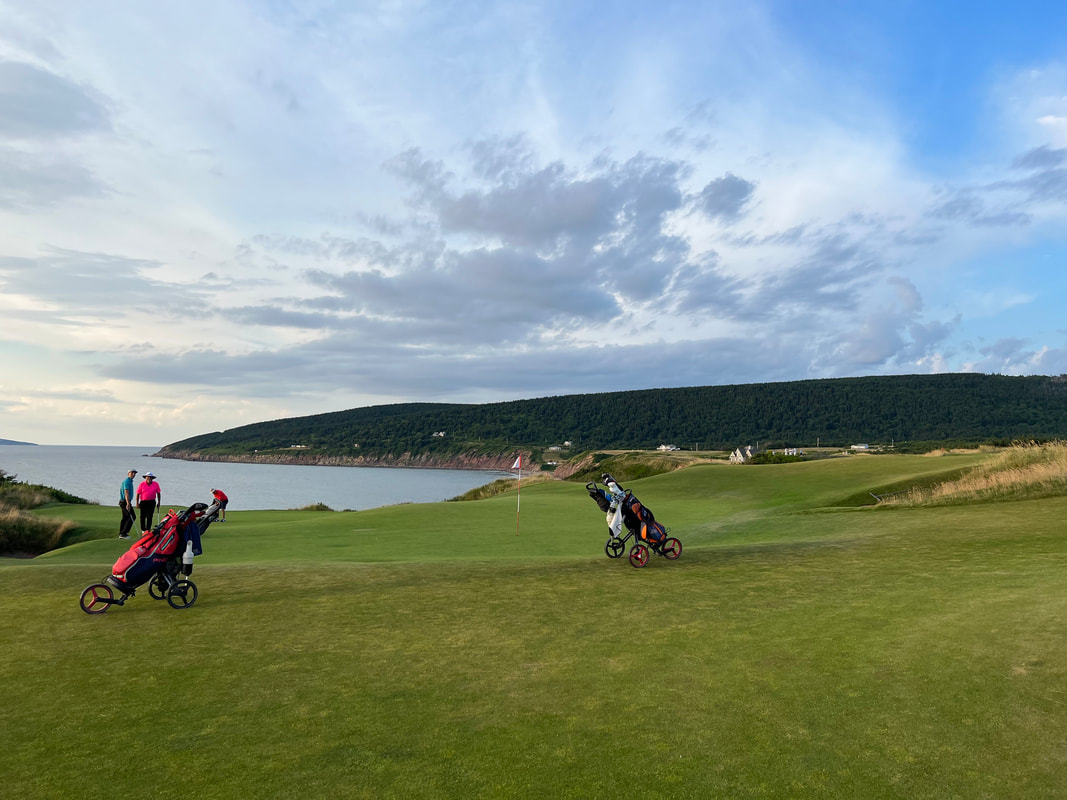
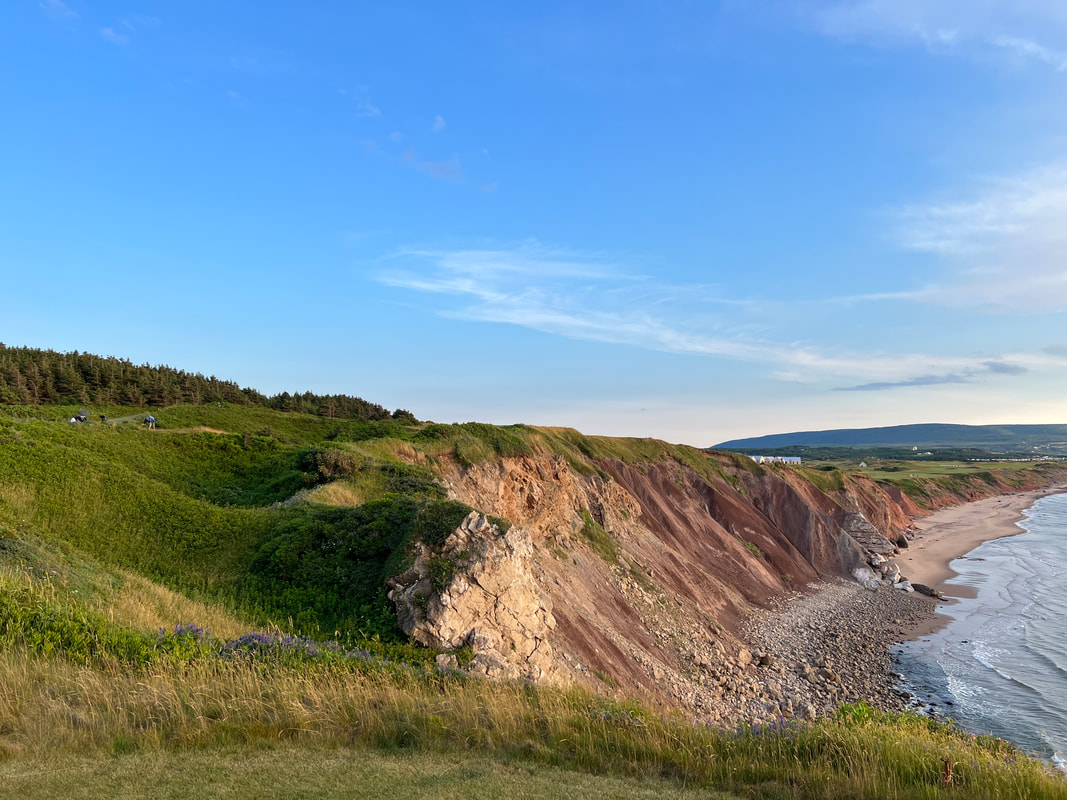
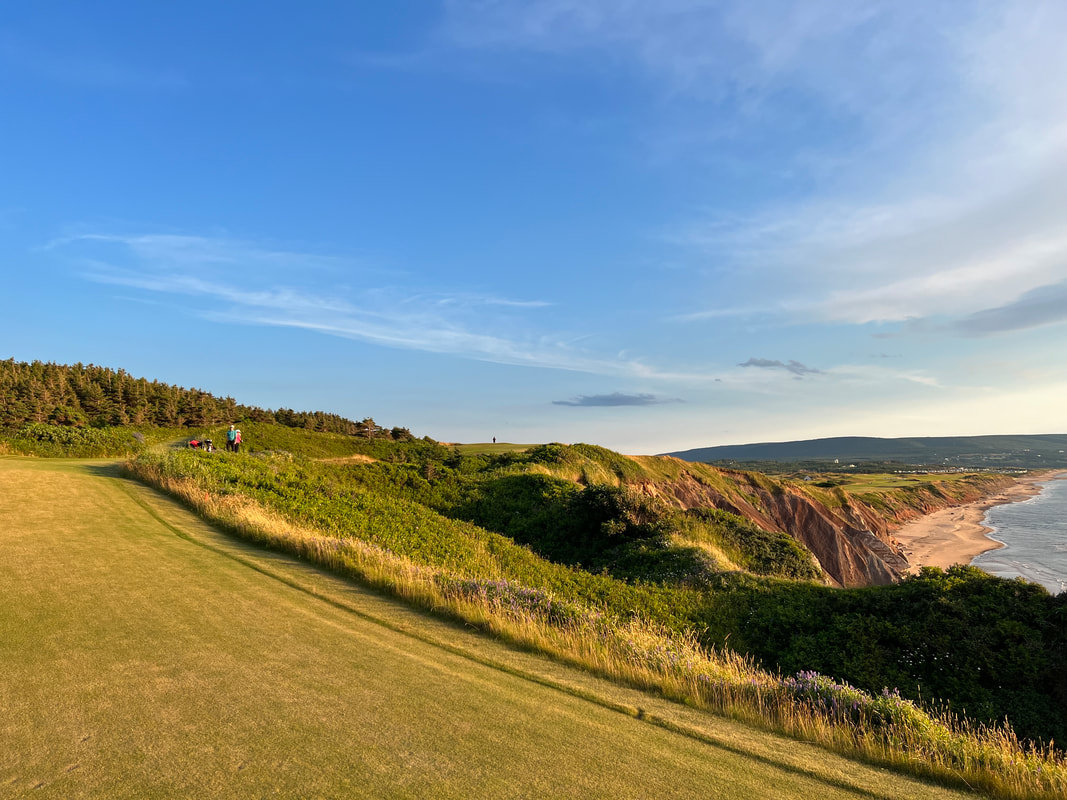
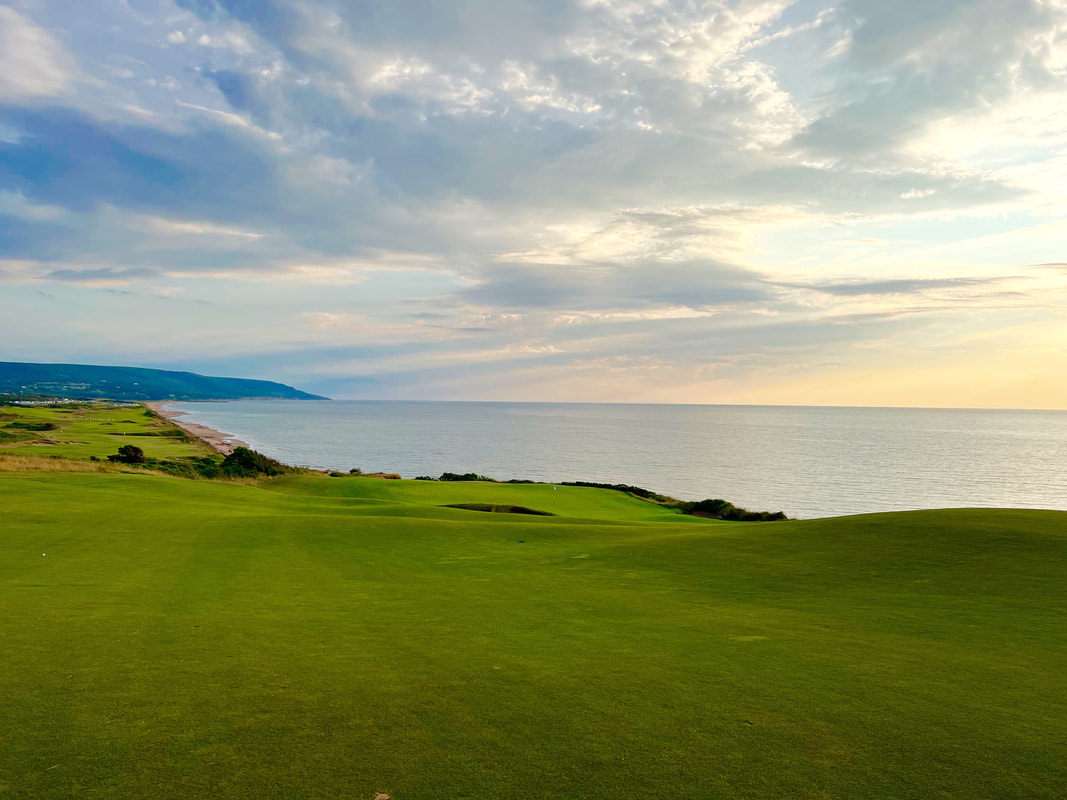

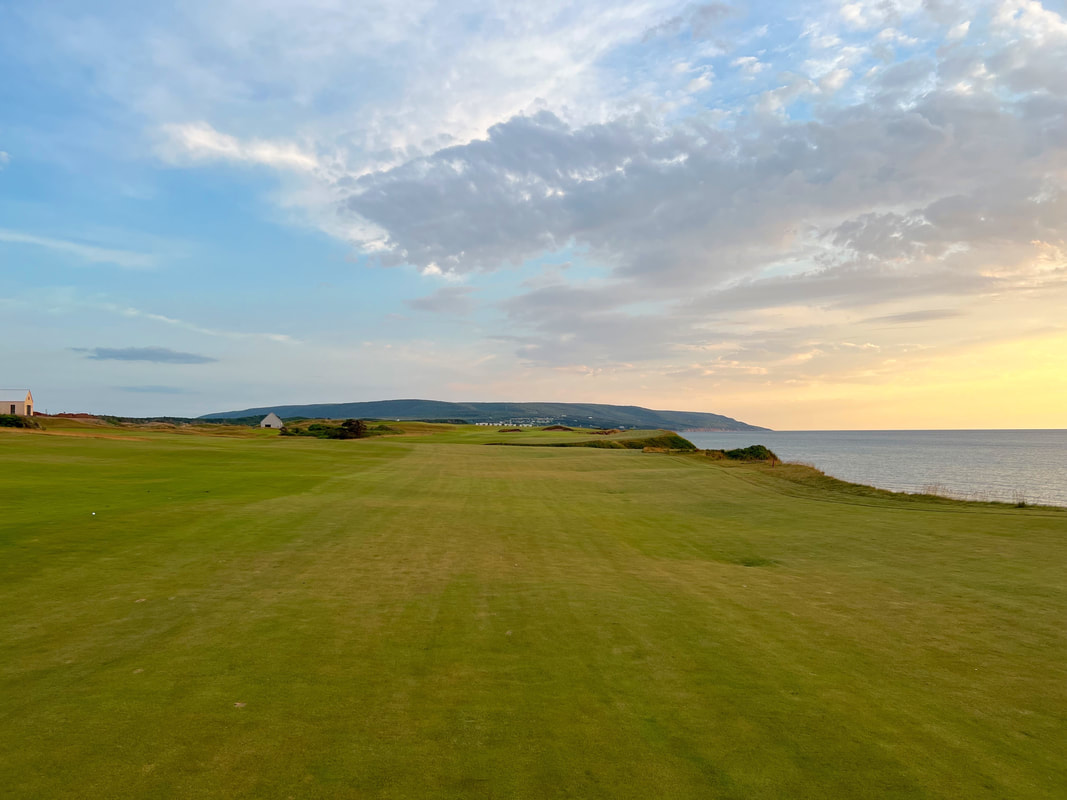
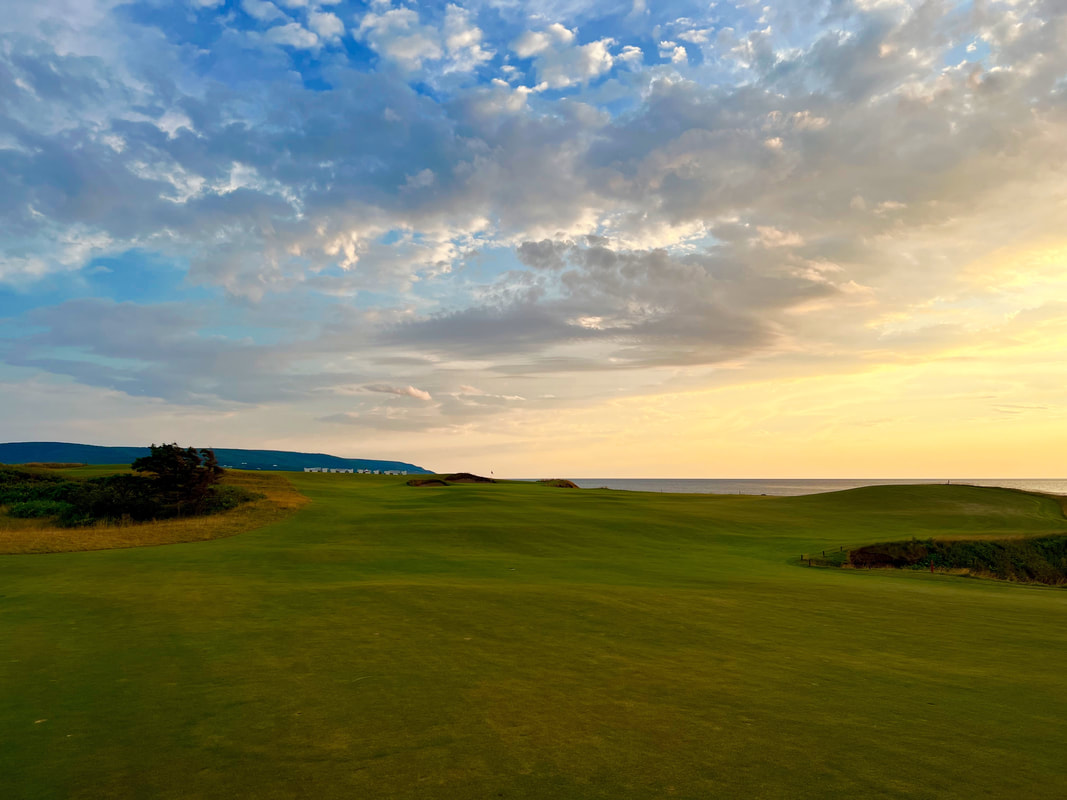
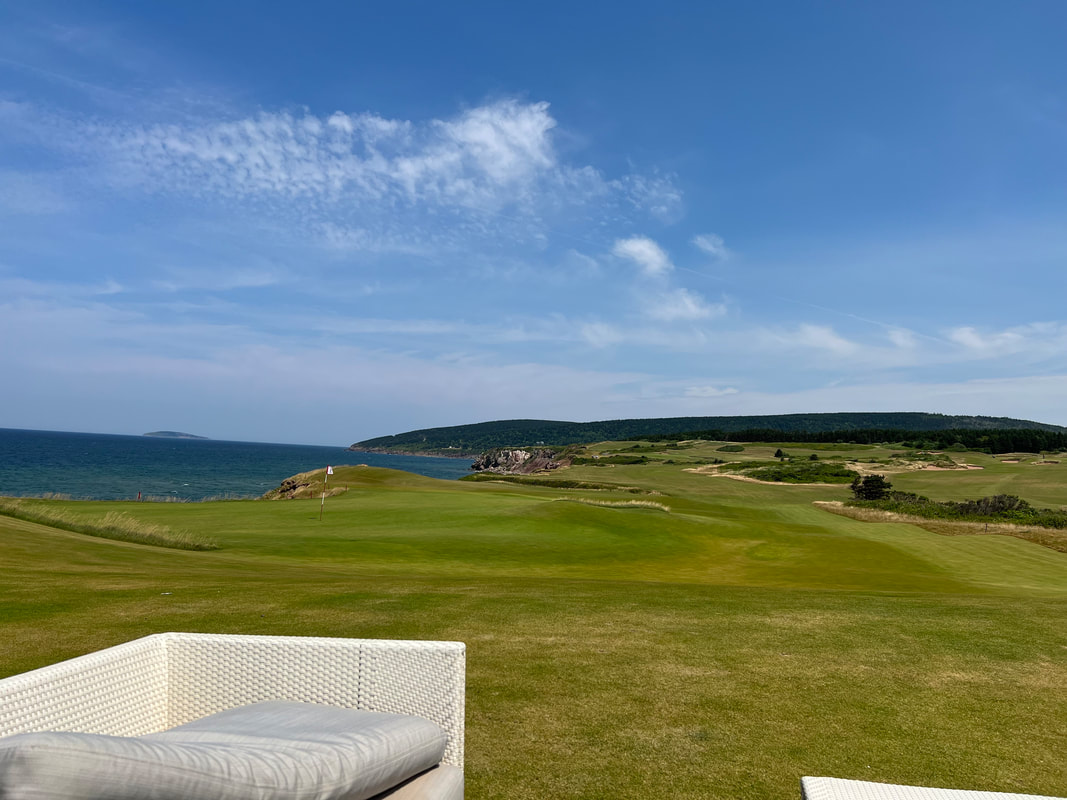
 RSS Feed
RSS Feed